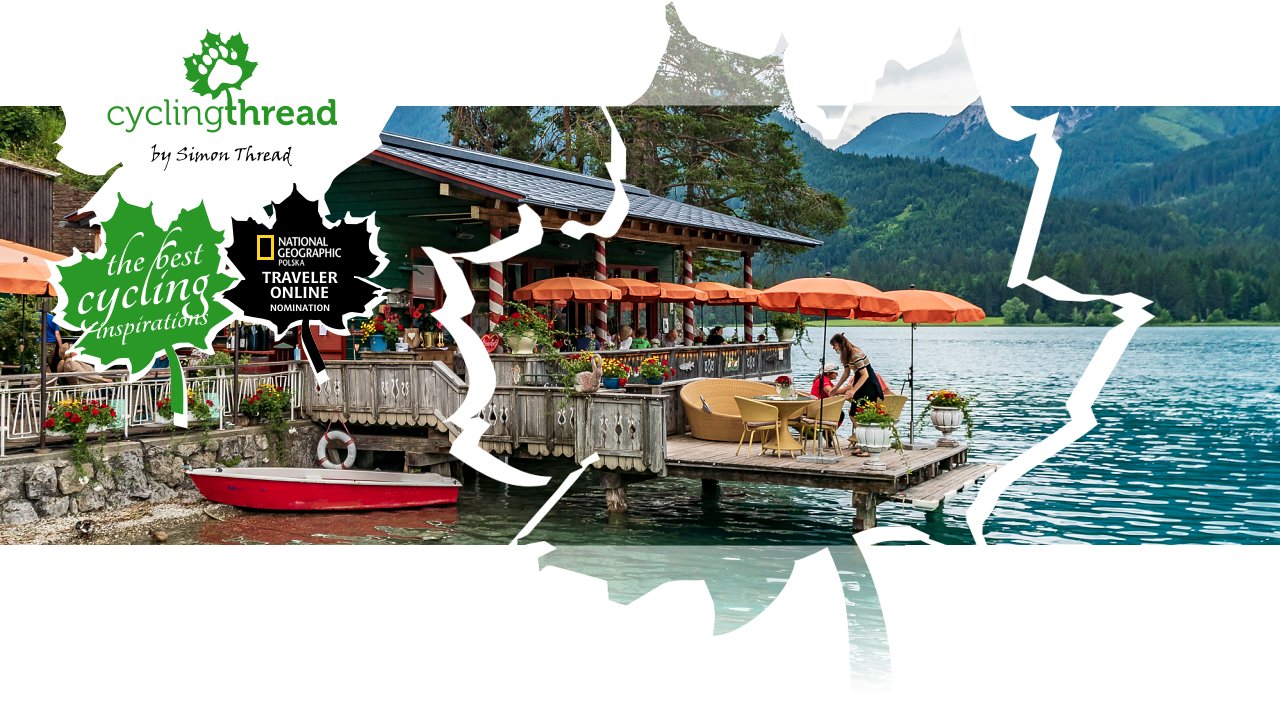
Cycling in Austria: the Drava Cycle Route in Carinthia
The Drauradweg cycling route (Drava Cycle Route) is one of only four routes in Europe to receive the highest rating of five stars for quality from the Allgemeiner Deutscher Fahrrad-Club (ADFC). This beautiful cycling route in Austria was almost entirely part of our journey this year, with a slight detour to climb up to Lake Weissensee and skipping the final sections in Slovenia and Croatia due to pandemic-related challenges. In its central and longest stretch, the Drava Cycle Route passes through Austria's Carinthia region, and it’s the breathtaking landscapes of this area that add a special charm to a summer adventure through Austria.
Route on the map
GPX file (GPS track): cyclingthread.com-carinthia-2021.gpx
Drava Cycle Route - table of contents
- 510 kilometers of excellent cycling
- Landscapes of South Tyrol, East Tyrol, and Carinthia
- A memorable evening during the European Championship
- The beautifully restored Grand Hotel in Toblach
- San Candido - the last chance for Italian coffee
- A pleasant stop in Lienz
- Through East Tyrol on excellent cycling roads
- Coffee, sandwiches, and power from a cycling container
- More natural surfaces in Carinthia
- Returning to the delightful Weissensee after a year
- Selfies by the water and checking covid certificates
- Trailers, tandems, recumbent bikes, and cargo bikes
- Welcomed by the friendly Radbutler in Villach
- Carinthian model and the automobile museum in Villach
- Eleven hydroelectric power plants along the Drava
- Europe’s largest fish pass
- Feeding northern bald ibises in a field
- New perspectives in an art installation
- Dozens of the most scenic kilometers in Carinthia
- Routine bike check along the Drava
- Signs pointing to beds and markets
- Interval-filled section to end the journey
- Cycling road 100 meters above the water
- The pandemic doesn’t stop cycling adventures
- Five stars from ADFC for the Drava route
- The Drava Route Hosts Association
- Where to book accommodations and find information
- Bird Service offers a route in Carinthia
- Plan your cycling trips in advance
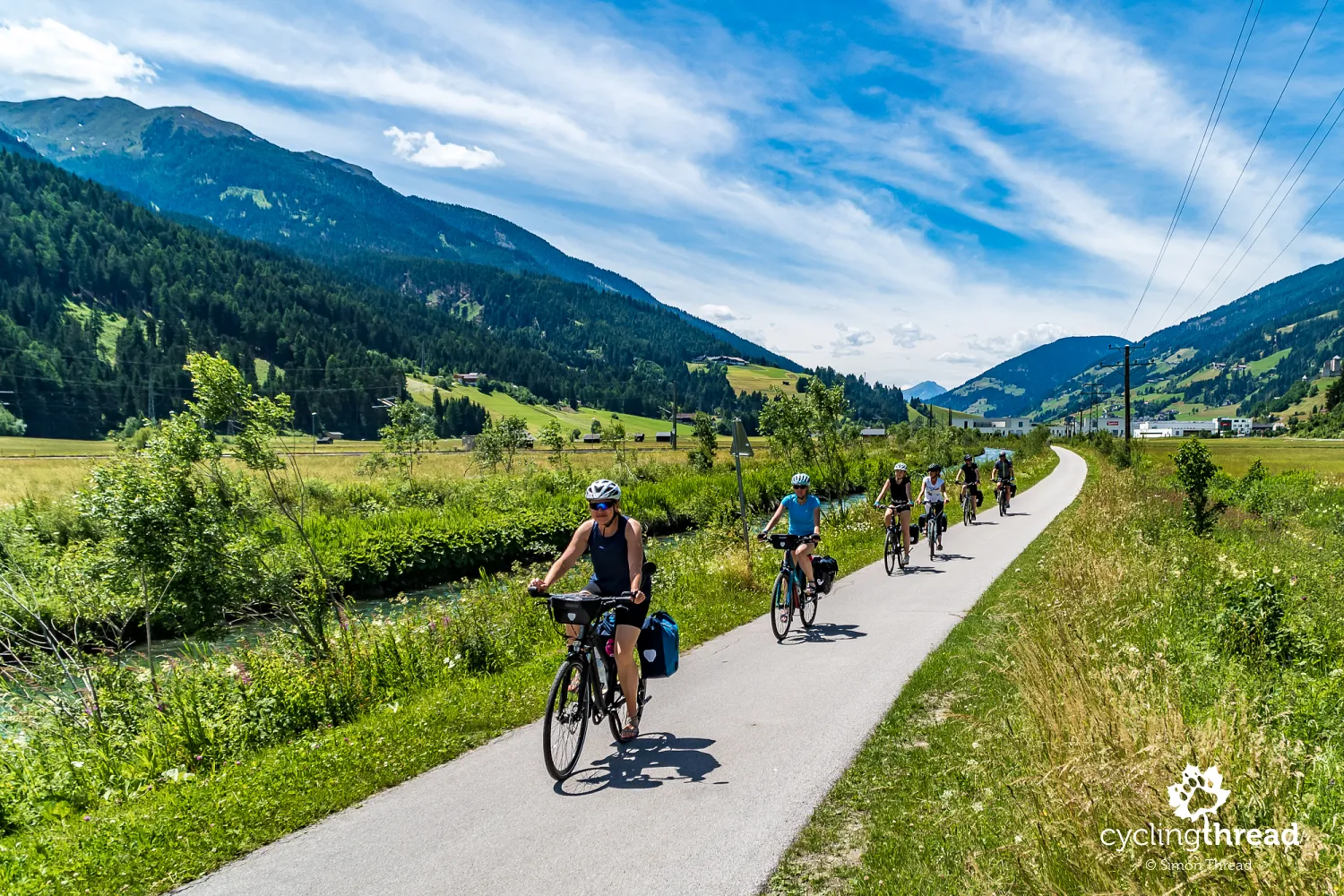
510 kilometers of excellent cycling
The Drava Cycle Route (Drauradweg in German) is considered one of the finest cycling routes in Austria. The full route stretches for approximately 510 kilometers. It starts in Toblach (Italian: Dobbiaco) at the foot of the Dolomites in Italy’s South Tyrol, passes through East Tyrol and Carinthia in Austria, and continues through Slovenia, ending in Varaždin, Croatia. Depending on the cyclist’s fitness level, the journey typically takes 5 to 7 days, allowing time to explore interesting spots along the route and enjoy the culinary highlights of the regions. Our ride along the Drava covered just under 300 kilometers. Due to pandemic-related restrictions, we ended our journey just before the Austrian-Slovenian border, at the Aich/Dob train station in a small village.
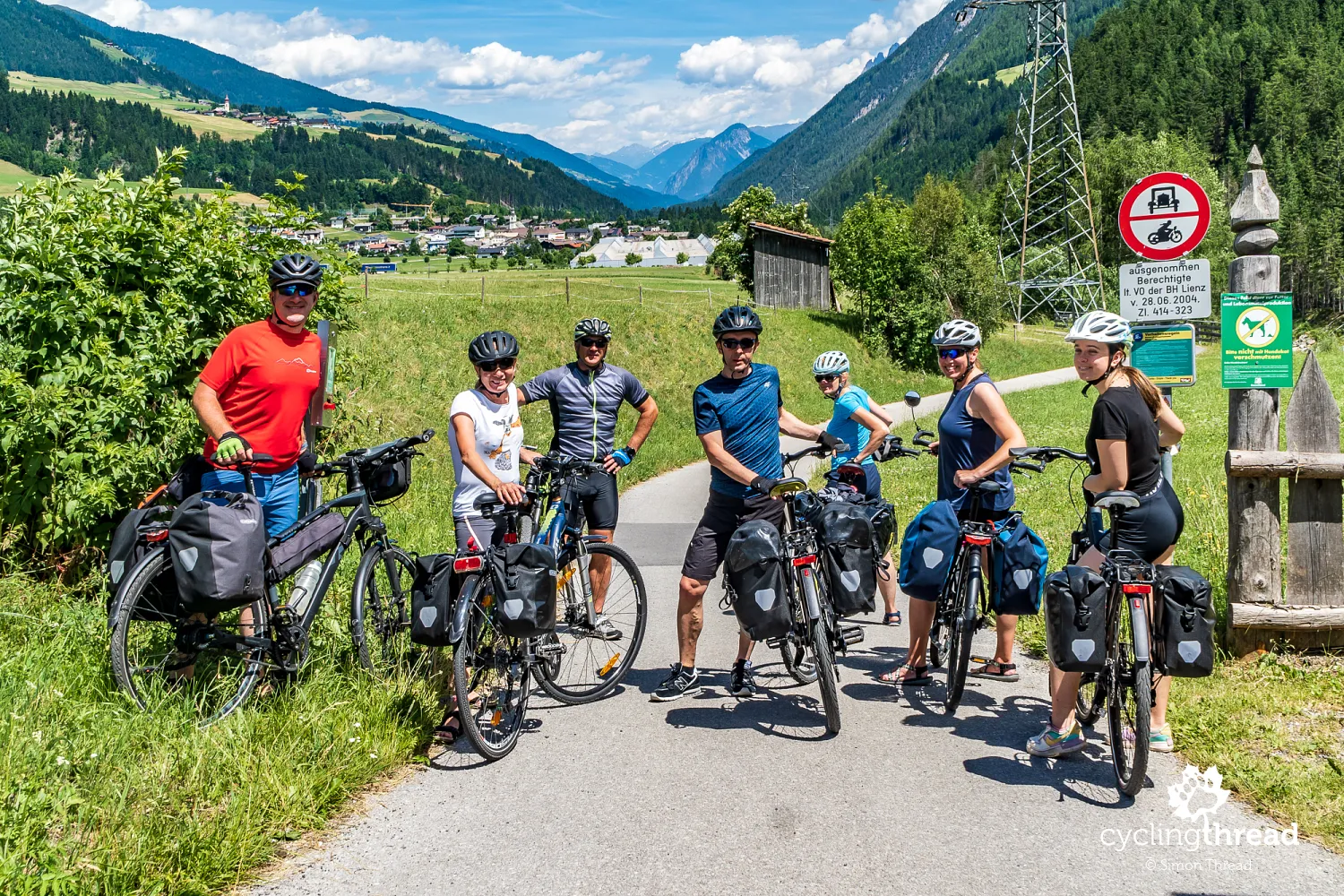
Landscapes of South Tyrol, East Tyrol, and Carinthia
Since several days of cycling along a river might feel monotonous to some, I suggested adding a “special segment” to our route - a climb to Weissensee, a lake situated over 300 meters higher. On one hand, it was a way to make the ride through Carinthia more exciting. On the other, I still had fond memories of Weissensee from the previous year when we cycled the Carinthian Lake Loop, which passes through the same area. The main course of the Drauradweg required no other adjustments. The landscapes of Italy’s South Tyrol, Austria’s East Tyrol, and Carinthia perfectly complemented the journey, offering ever-changing natural vistas along the route.
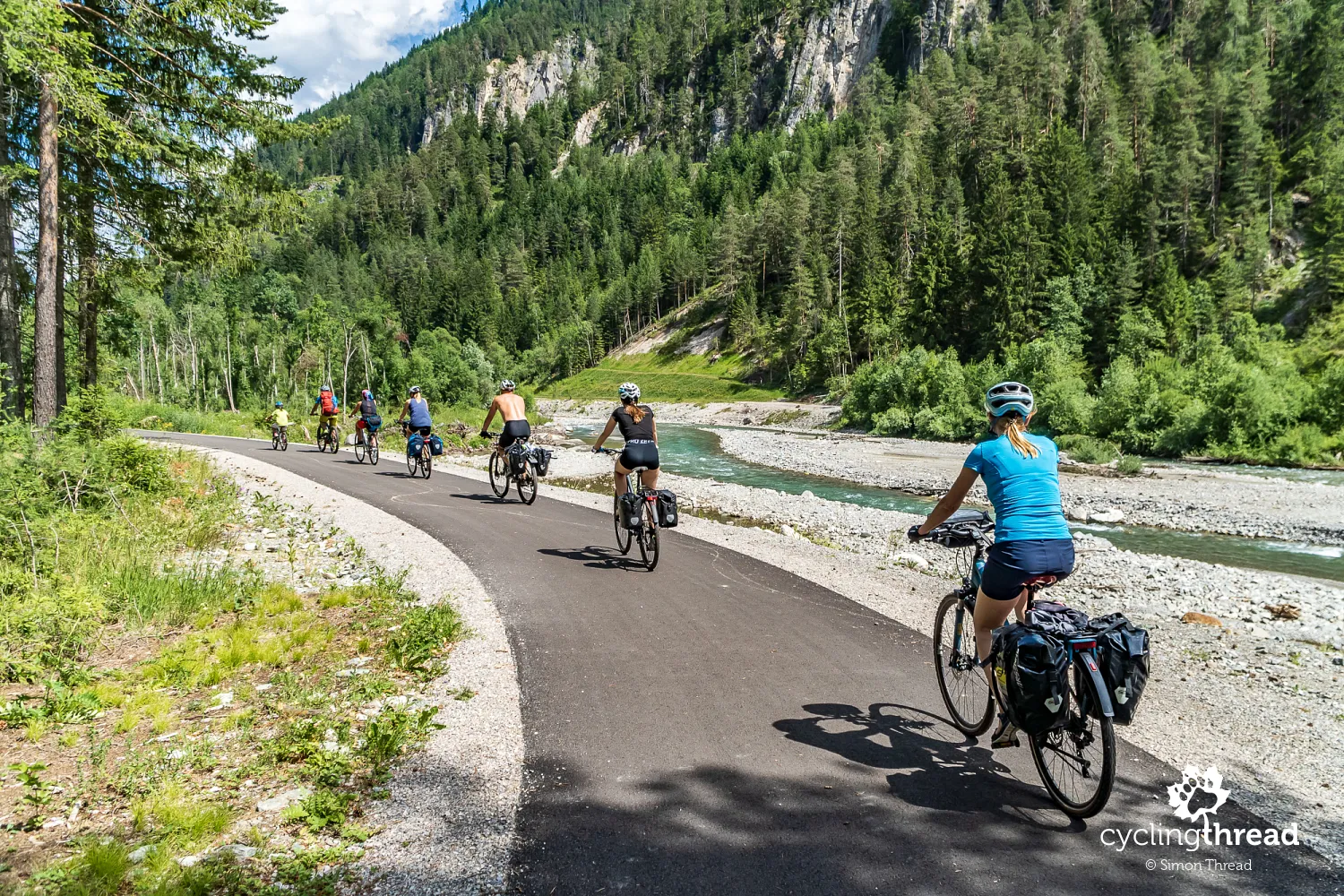
A memorable evening during the European Championship
Our adventure got off to a great start on the very first day. In Toblach, we enjoyed a dinner on the terrace of a cozy Italian restaurant while watching the quarterfinal of the European Football Championship, where Italy played Belgium. That evening, football was everywhere, with every venue broadcasting the game on large TVs or projectors mounted on the walls of buildings. What fascinated us more than the match itself was observing the Italian fans. Regardless of age, gender, or status, supporting the Italian national team was a cultural yet passionate affair, though at times it was quite lively and loud. Naturally, the most solemn moment was singing the Italian national anthem - standing, with hands on hearts, although… not everyone followed this tradition.
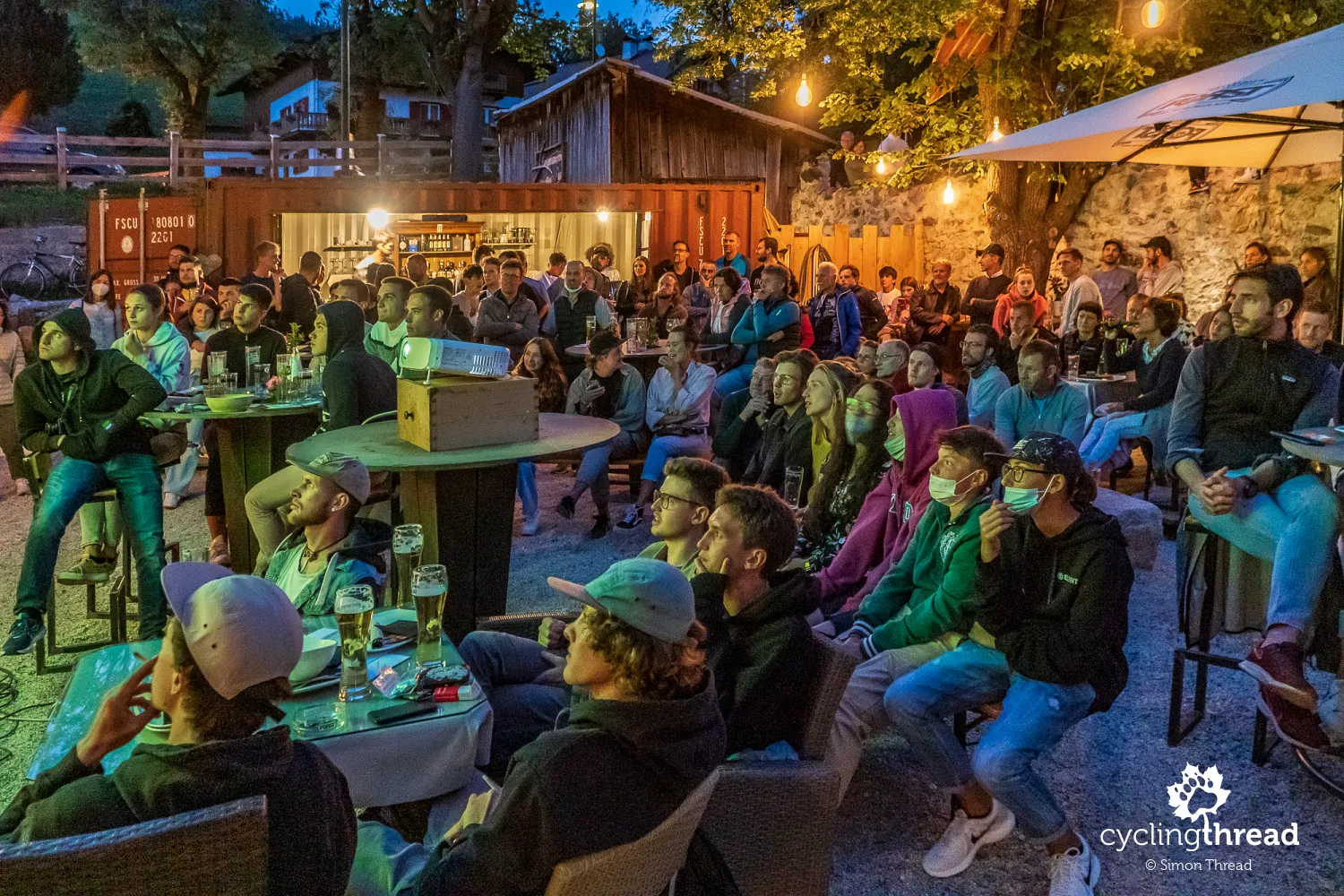
The beautifully restored Grand Hotel in Toblach
On the first morning of our trip, before setting off, we visited an exhibition about the Dolomites at the Tre Cime and Fanes-Sennes-Braies natural parks’ tourist center. The center is located in the beautifully restored complex of the former Grand Hotel in Toblach, built at the end of the 19th century. A large portion of the exhibition focuses on the geological and geomorphological features of the Dolomites and the Pustertal valley. In addition to the tourist information and exhibition, the complex houses a guesthouse where we stayed, a hostel, and a cultural center with a concert hall. While some of us watched the football match, others attended a classical music concert held at the same time. It’s worth noting that the guesthouse at the Grand Hotel offers ample parking for visitors, where we left our cars during the journey along the Drava route.
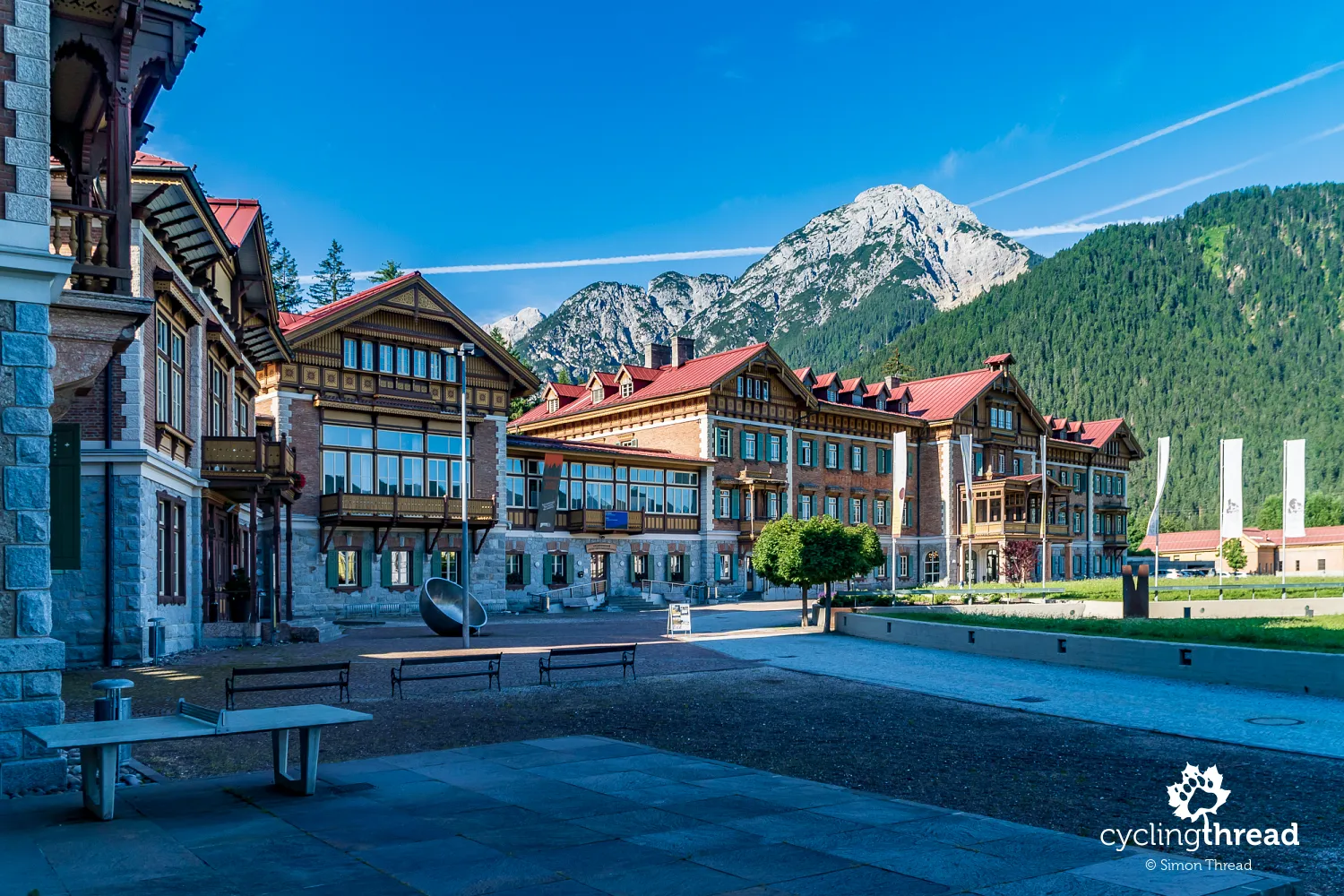
San Candido - the last chance for Italian coffee
The Italian section of the Drauradweg in the Dolomites holds mainly symbolic value for the entire route. It teases with stunning Dolomite panoramas rather than offering a real sense of visiting the mountains. In practice, the Italian portion is just 16 kilometers long, but even this short section adds variety to the overall experience of the Drava route. Besides Toblach, the other Italian town along this stretch is the charming San Candido (German: Innichen). Its railway station serves as a transfer point between South Tyrol, East Tyrol, and Carinthia. In the historic streets of the town center, you can find a good sports store, a bike rental shop, and stock up on supplies, or sit down with your group for the first - and unfortunately the last - Italian coffee of the day, ideally at a café in the shadow of San Candido’s collegiate church.
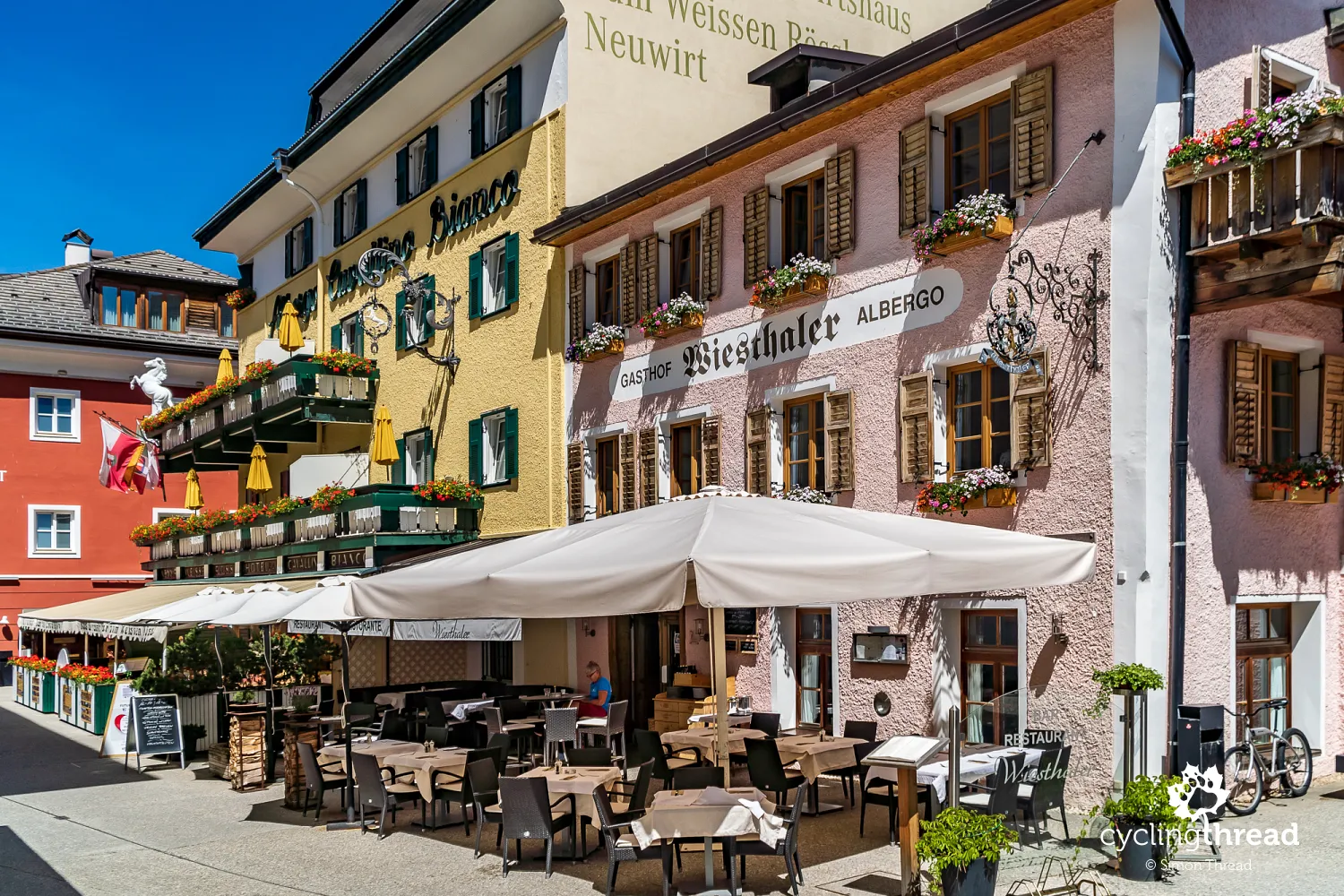
The collegiate church in San Candido, with its tall Romanesque tower rising above the town, is considered the most important Romanesque monument in Tyrol and the entire Eastern Alps. Founded in the 8th century, its current form dates back to the 12th and 13th centuries. It has remained intact over the centuries and is undoubtedly one of the most valuable historic landmarks along the route. Visitors should step inside to see its austere Romanesque interior, where a crucifix with the city’s patron saints hangs above the altar. Below the altar, there is also an open crypt accessible to visitors.
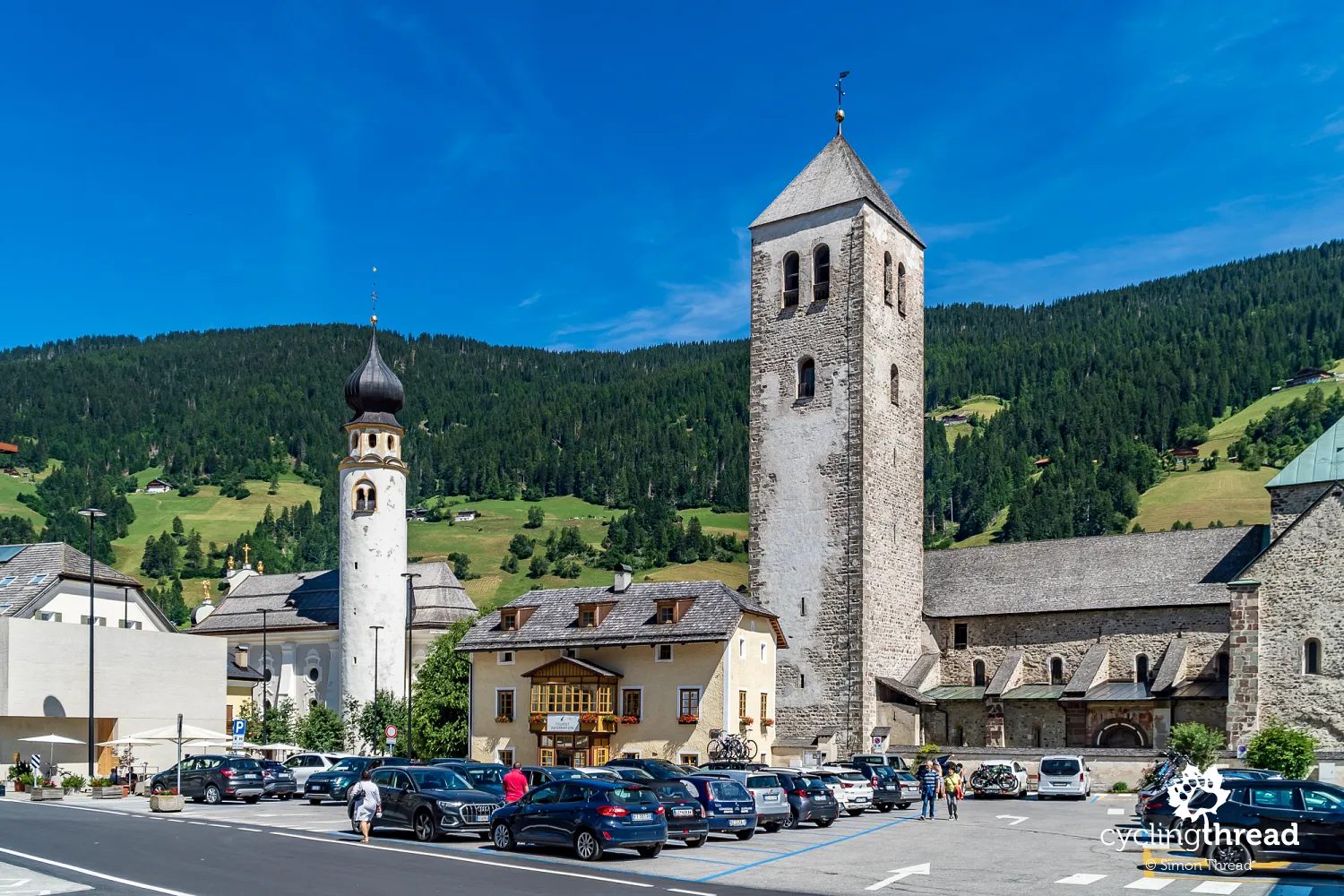
A pleasant stop in Lienz
The Austrian-Italian border is crossed at a fairly inconspicuous spot on the route, marked with signs featuring the European Union symbols. This is where the Tyrolean stage of the Drava Cycle Route begins - we enter the Lienz district, also known as East Tyrol, part of the Tyrol federal state. Interestingly, East Tyrol is an exclave of the main Tyrol region, meaning that to reach Innsbruck, the Tyrol capital, one must pass through the federal state of Salzburg. The capital of East Tyrol is Lienz, where we stopped for lunch in its pleasant, flower-filled town center. Just before that, we passed Zwergergasse, a street adorned with hanging laundry, where summer concerts and performances are held on an open-air stage.
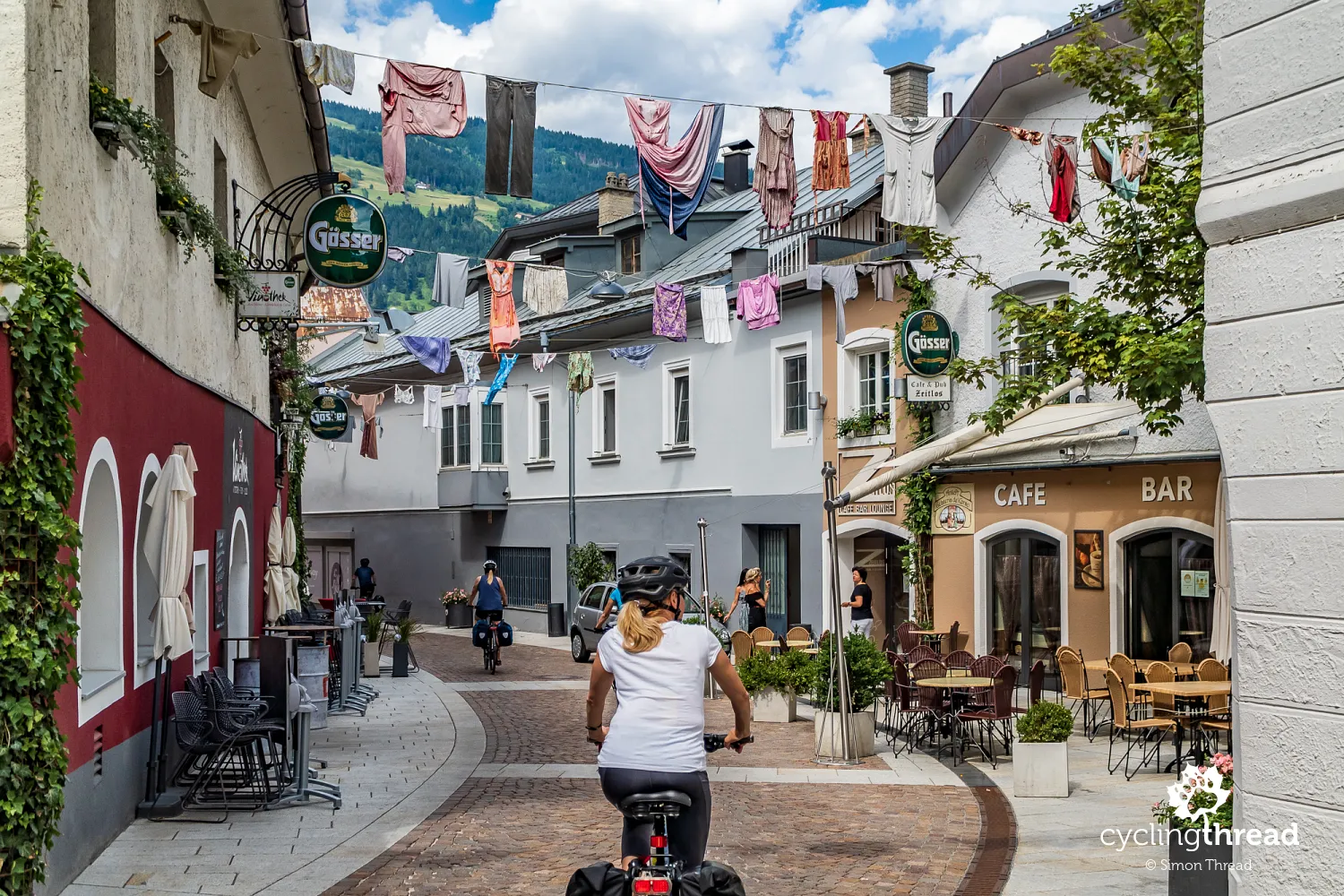
Through East Tyrol on excellent cycling roads
The short stretch of the Drava Cycle Route in East Tyrol, which we completed entirely in one day, gave us a taste of the route's outstanding preparation. On the first few kilometers, the Drava River is barely larger than a stream, while further on, after passing Lienz, it becomes a broad, fast-flowing mountain river. The significant gradient of the river in this Tyrolean section makes for numerous enjoyable downhill rides, adding even more pleasure to the journey. This ride, throughout the day, took place on paved cycling roads, far from car traffic and often running directly alongside the Drava. One of the most scenic sections even featured freshly laid smooth asphalt and bright gravel shoulders not yet overtaken by vegetation - a perfect testament to the local authorities’ dedication to maintaining the cycling route.
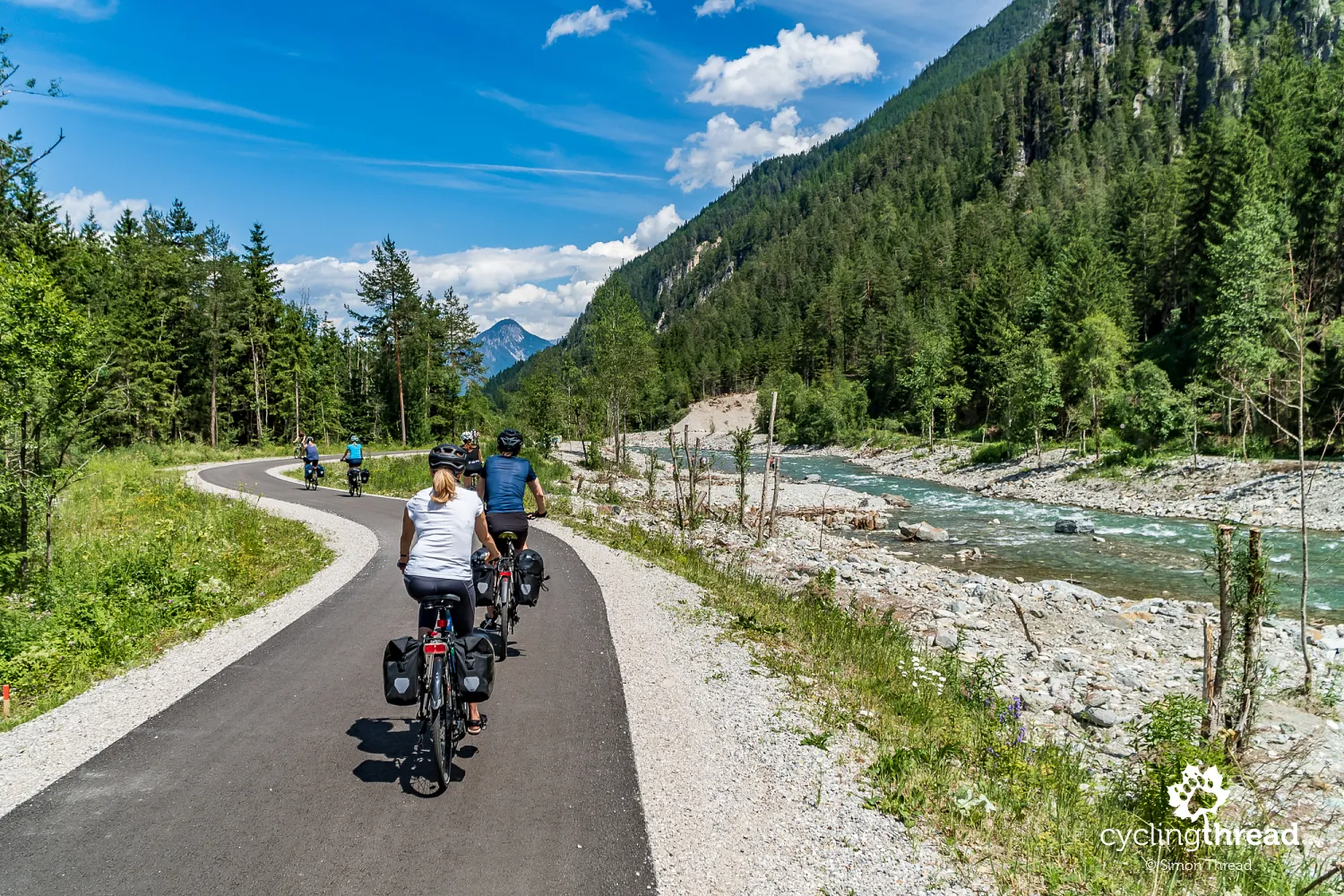
On the Tyrolean section, we were accompanied for an extended time by the panoramic views of the Gailtal Alps, including the Lienz Dolomites. The name "Lienz Dolomites" references their famous neighbors, not for geological similarities, but for the shape of their rugged peaks, which resemble those of the Dolomites. The Lienz Dolomites and the entire Gailtal Alps are popular among hiking enthusiasts, thanks to numerous via ferratas across the region. The Gailtal Alps span about 100 kilometers, with Große Sandspitze, standing at 2,770 meters above sea level, as their highest peak. The picturesque Weissensee, where we planned to arrive the next day, is also located within the Gailtal Alps.
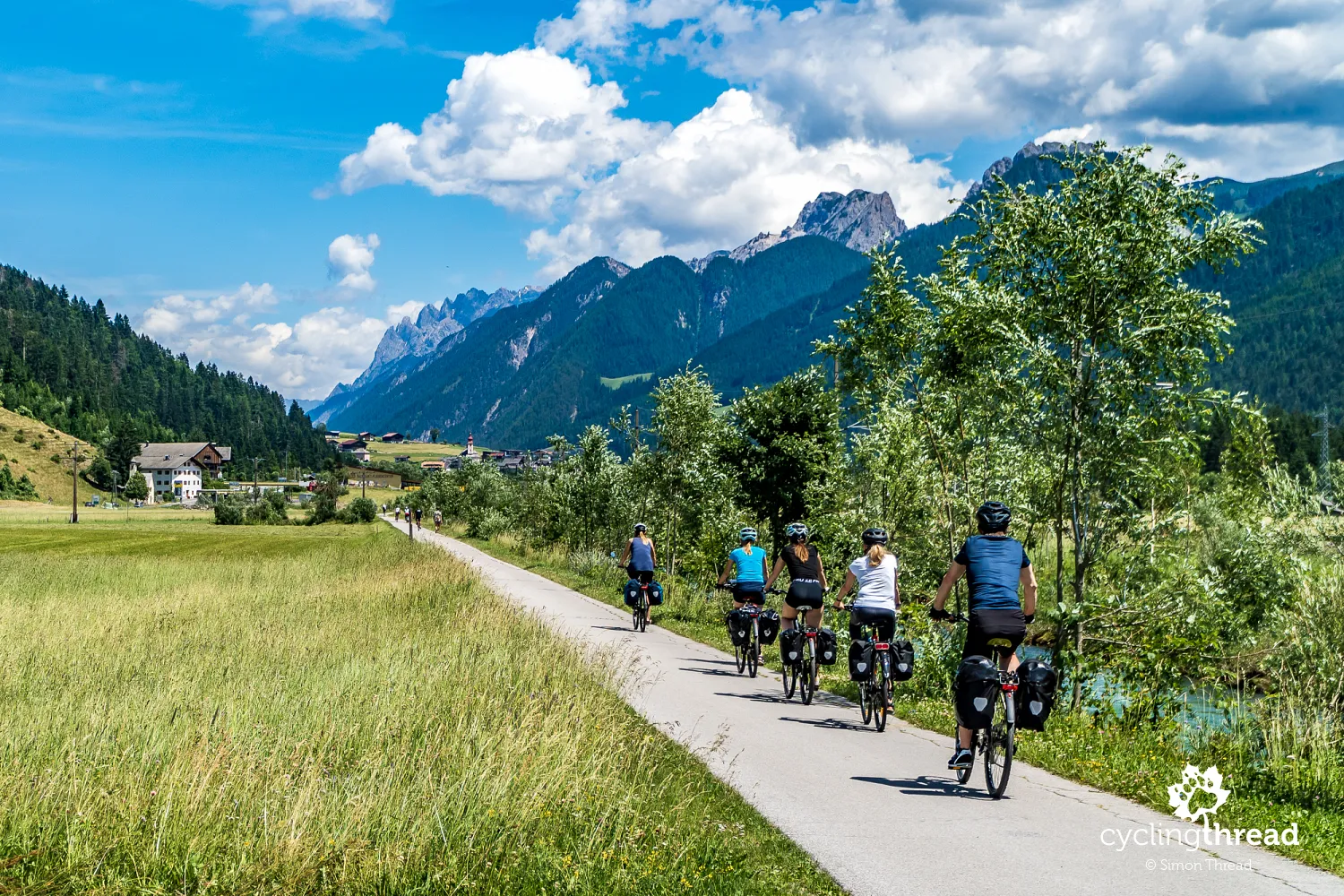
Coffee, sandwiches, and power from a cycling container
Somewhere before Lienz, we stumbled upon an unexpected sight - a container set up along the route serving as a self-service shop, a resting place, and a charging station for e-bike batteries. I wouldn’t say its aesthetic thrilled me, but I imagine this could be the direction for service points along cycling routes. They don’t require large investments, offer cyclists basic necessities, and could even serve as shelter from rain or bad weather. However, should the practical benefits of such places outweigh their visual impact, which in this case doesn’t quite harmonize with the Alpine landscape?
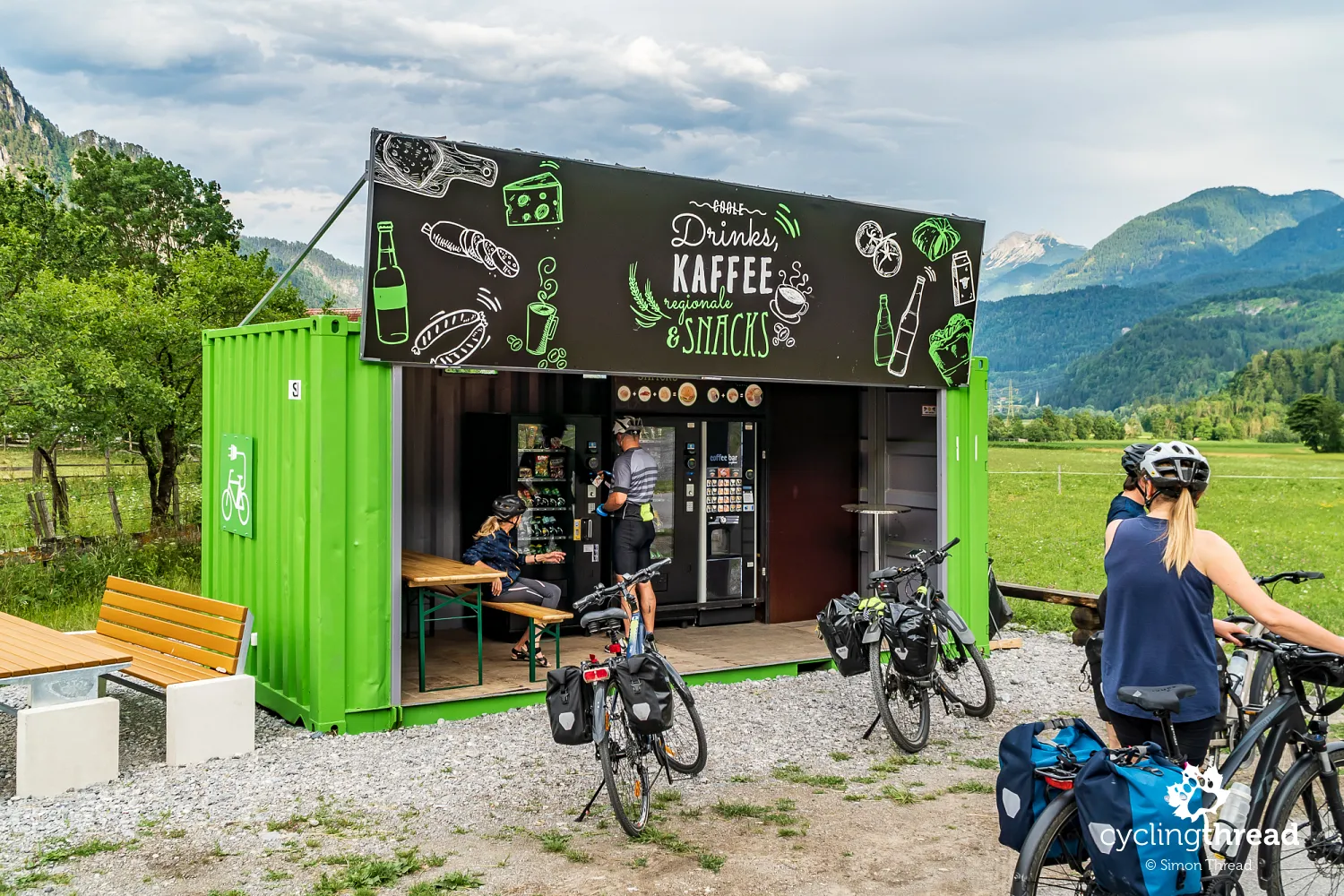
More natural surfaces in Carinthia
The next day took us to Carinthia and its stretch of the Drauradweg. Since individual federal states in Austria are responsible for maintaining cycling routes, we quickly noticed that Carinthia has its own distinct take on the Drauradweg, quite different from East Tyrol. Until the end of our journey along the Drava cycling route, many sections would run on natural and gravel surfaces. No worries, though - even when dirt roads appeared beneath our wheels, they were always firm and comfortable. As a result, Carinthia often presented itself in a more natural guise compared to what we had seen in East Tyrol, where the route ran entirely on asphalt. However, the surfaces in Carinthia didn’t seem to bother us or any of the other cyclists on the route.
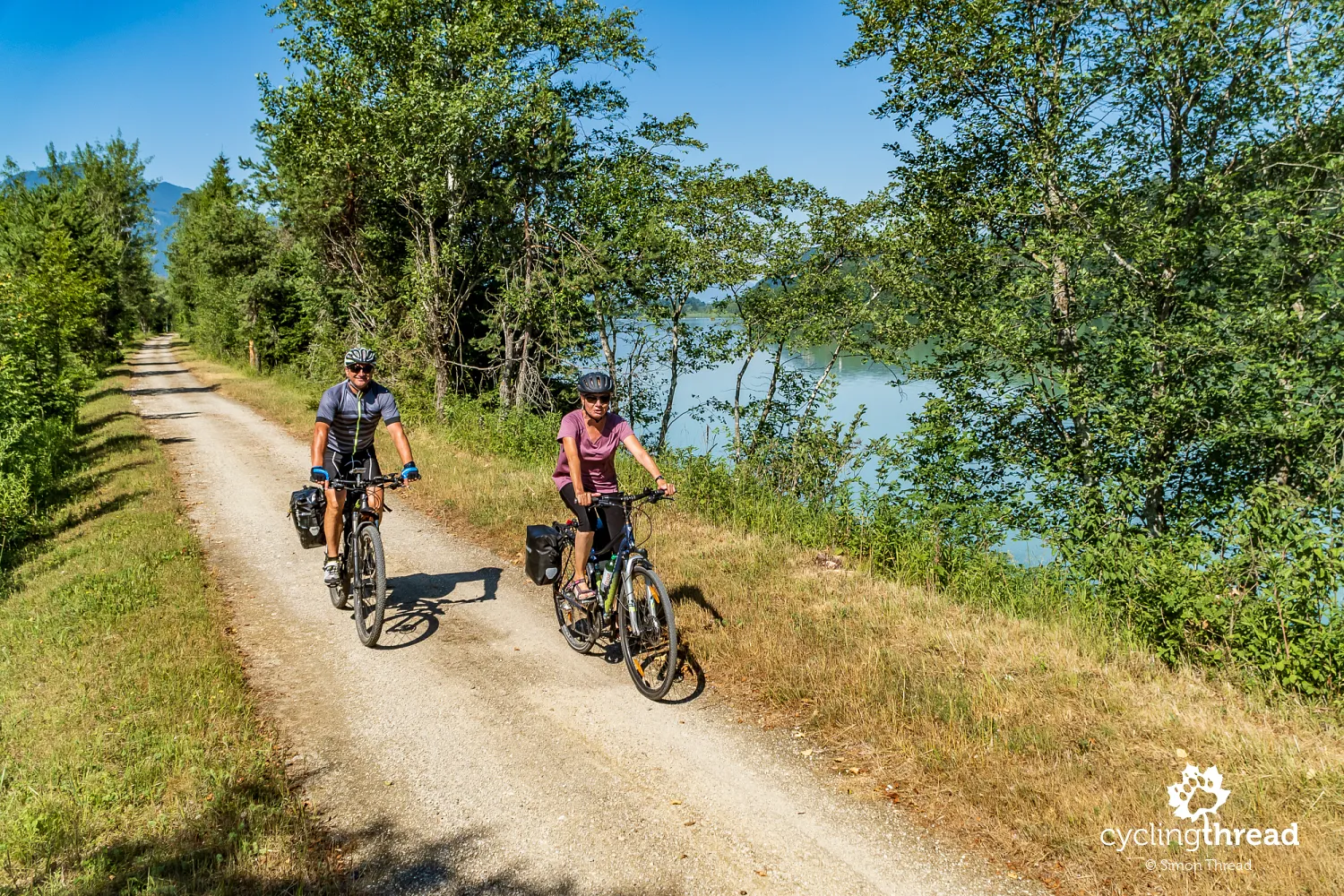
Returning to the delightful Weissensee after a year
This first day in Carinthia was also the day we left the Drava for about 50 kilometers, heading to the Weissensee - Austria’s highest bathing lake. This part of the route includes a section that must be covered… by a tourist boat, as no roads accessible to touring bikes surround the high-altitude Alpine lake. We had visited Weissensee the previous year while cycling the Carinthian Lake Loop, and with such fond memories, we didn’t hesitate to bring this year’s group here. The cost of reaching one of Austria’s most beautiful spots is minimal - a few kilometers uphill on a forest road that is occasionally quite steep. In return, you get the turquoise waters of Weissensee, charming lakeside restaurants, and a unique water segment aboard Austria’s first hybrid tourist boat. And since the route to Weissensee involved a significant climb, returning to the Drava Valley meant a blissful descent through the forest spanning over a dozen kilometers.
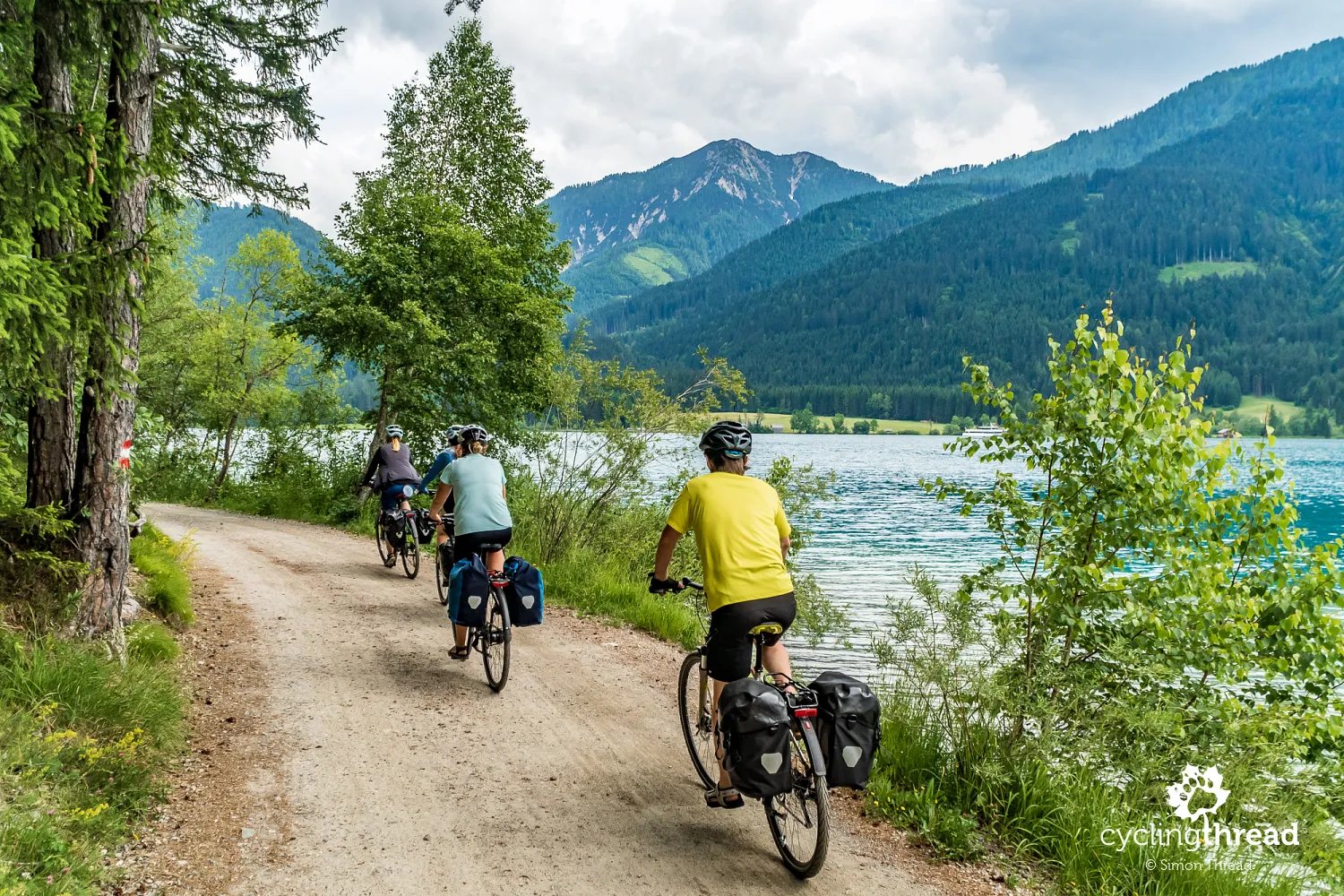
It’s a good idea not to plan long distances for this day to fully enjoy the holiday atmosphere of Weissensee, a popular destination among Austrians. The lake stretches for an impressive 20 kilometers. Shortly after arriving, we came across wooden tables with umbrellas - a cozy, bike-friendly restaurant called Tschatscheleria, where we stopped for a meal. Just a kilometer and a half further is the base station of a four-person chairlift. A quick ride up and down offered some of us a fantastic way to diversify the day and take in aerial views of the turquoise Weissensee. Before boarding the boat at the Ronacherfels pier, we stopped for coffee at what might be the most picturesque café in Carinthia.
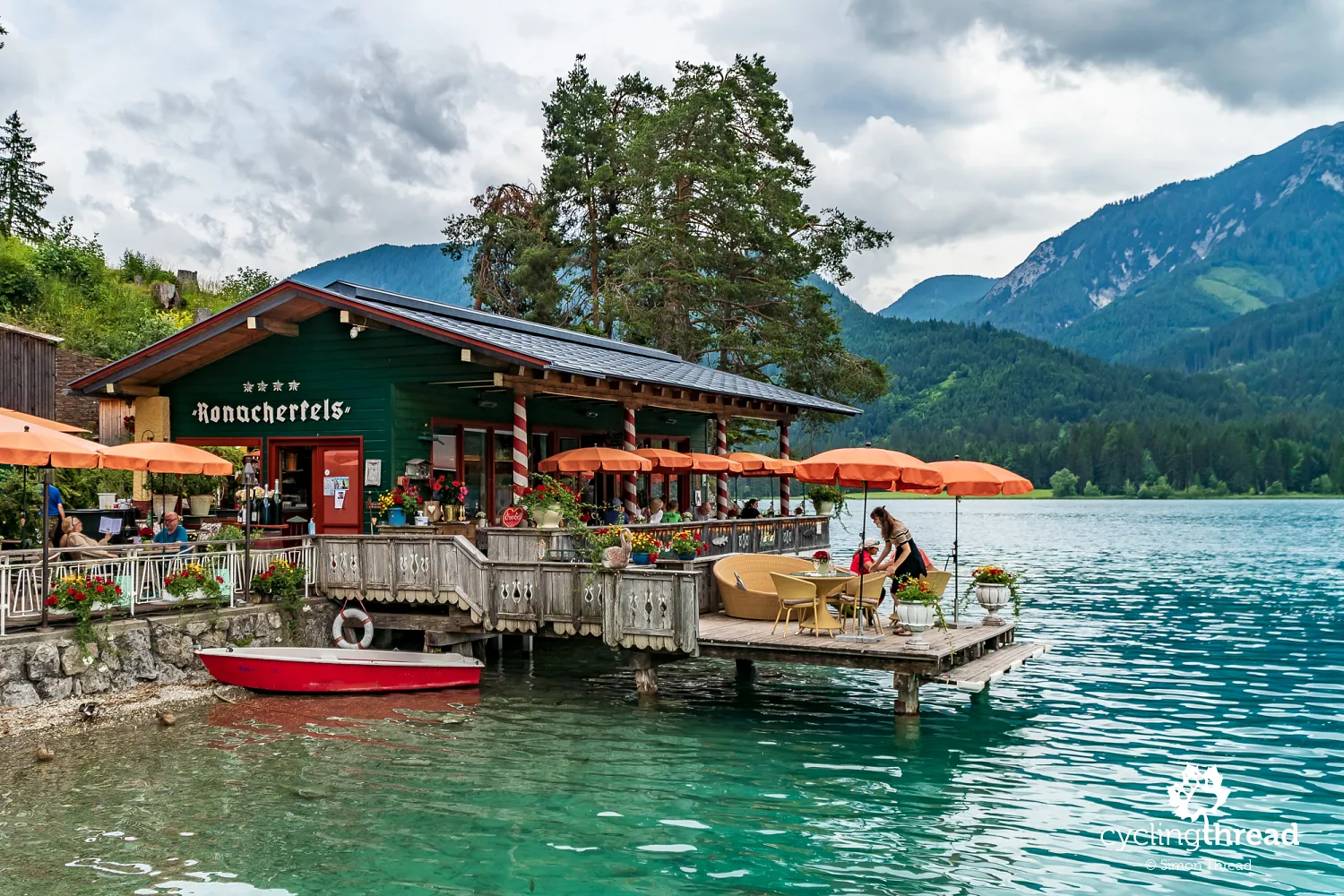
Selfies by the water and checking covid certificates
Between Spittal an der Drau and Villach, the Drava River widens significantly, taking on its mature form. Many sections of the route feature forested gravel paths running close to the water's edge, which are likely to be flooded during high water levels. Along this stretch, we came across a small café in Kellerberg, where a friendly waitress - unique in our days spent in Austria - carefully checked our European covid certificates. Directly opposite the café, at the end of a wooden pier, stands a large red heart - an ideal spot for a memorable selfie. We, however, used a specially prepared wooden frame located earlier along the cycling route.
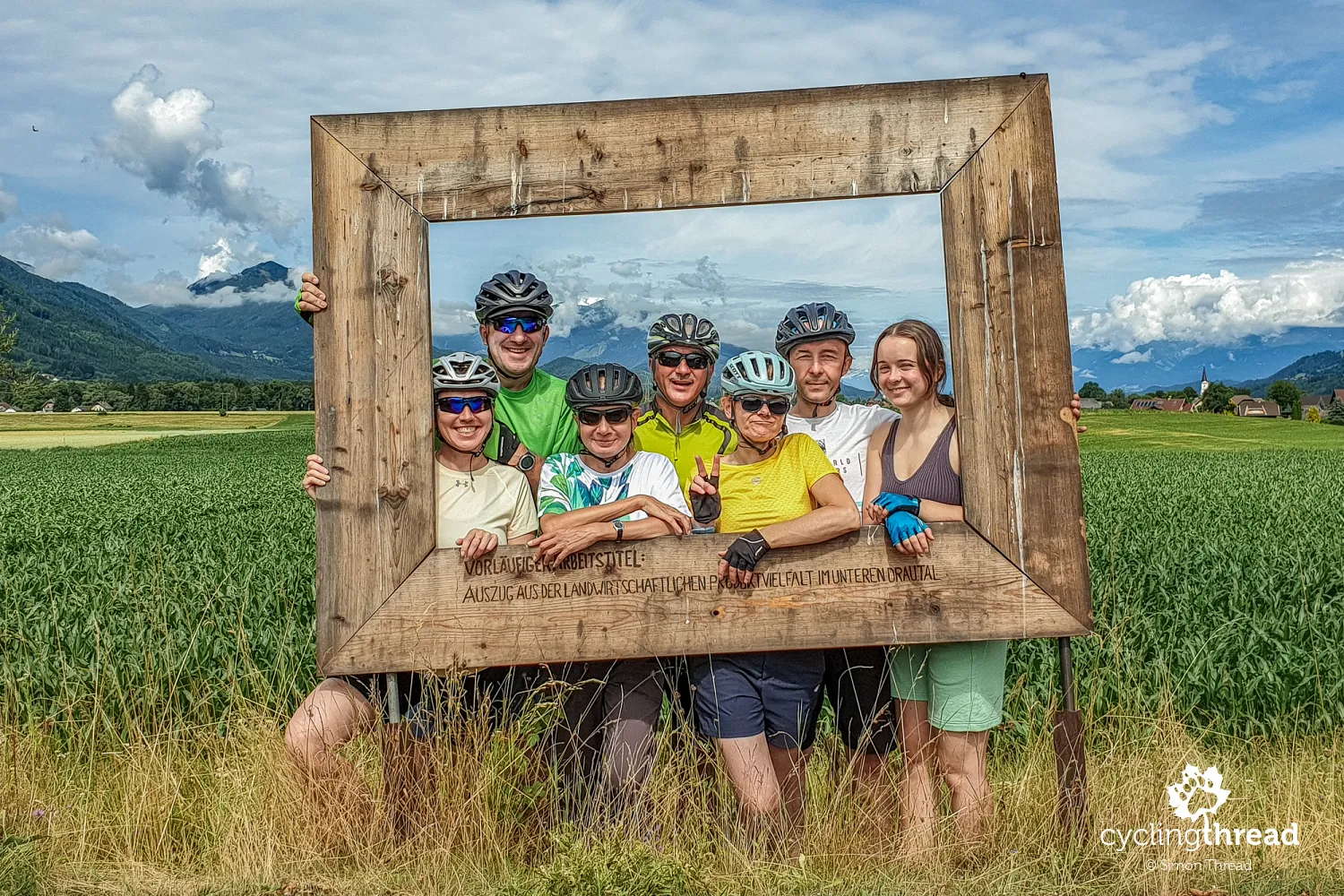
Trailers, tandems, recumbent bikes, and cargo bikes
Around 20-30 kilometers before Villach, we encountered the highest cycling traffic along the entire route. There was a great diversity, both among the cyclists and the types of bicycles they were riding. While trying to photograph the route signs for the Drava Cycle Route, marked with Austria’s R1 symbol and the transalpine Alpe-Adria Cycle Route, I came across a lovely cycling family riding unique tandems. A touring tandem with a Rohloff hub like theirs can cost nearly 40,000 PLN! Similar cheerful examples of family cycling trips in Carinthia caught our attention, including recumbent bikes, cargo bikes, bikes with child trailers, and a wide variety of classic touring bicycles.
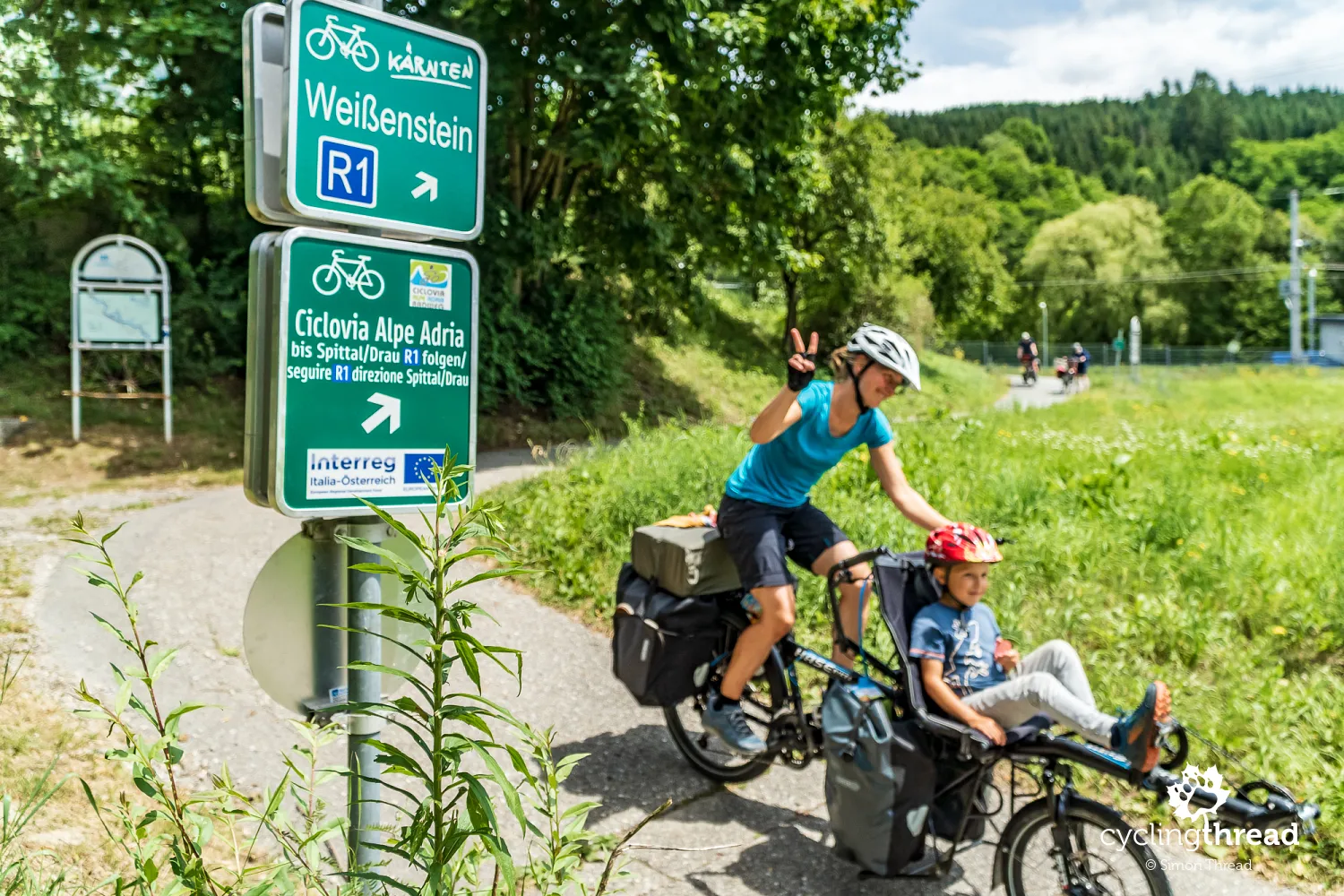
Welcomed by the friendly Radbutler in Villach
Villach greeted us with a warm, almost homely atmosphere, reflected in the charmingly cozy decorations of the stage in the city’s main square. We fondly remembered this lovely town, just like Weissensee, from the previous year. Back then, we had left our car in the city’s free tourist parking lot, making Villach both the starting and ending point of our Carinthian journey. Entering the city, we eagerly checked out Radbutler, Villach’s cyclist-friendly facility, where you can securely store your bike and luggage for free while exploring the city or even staying overnight. Last year, we arrived outside its operating hours and found it closed. This time, we saw firsthand that it’s a popular stop for tourists cycling the Drava route.
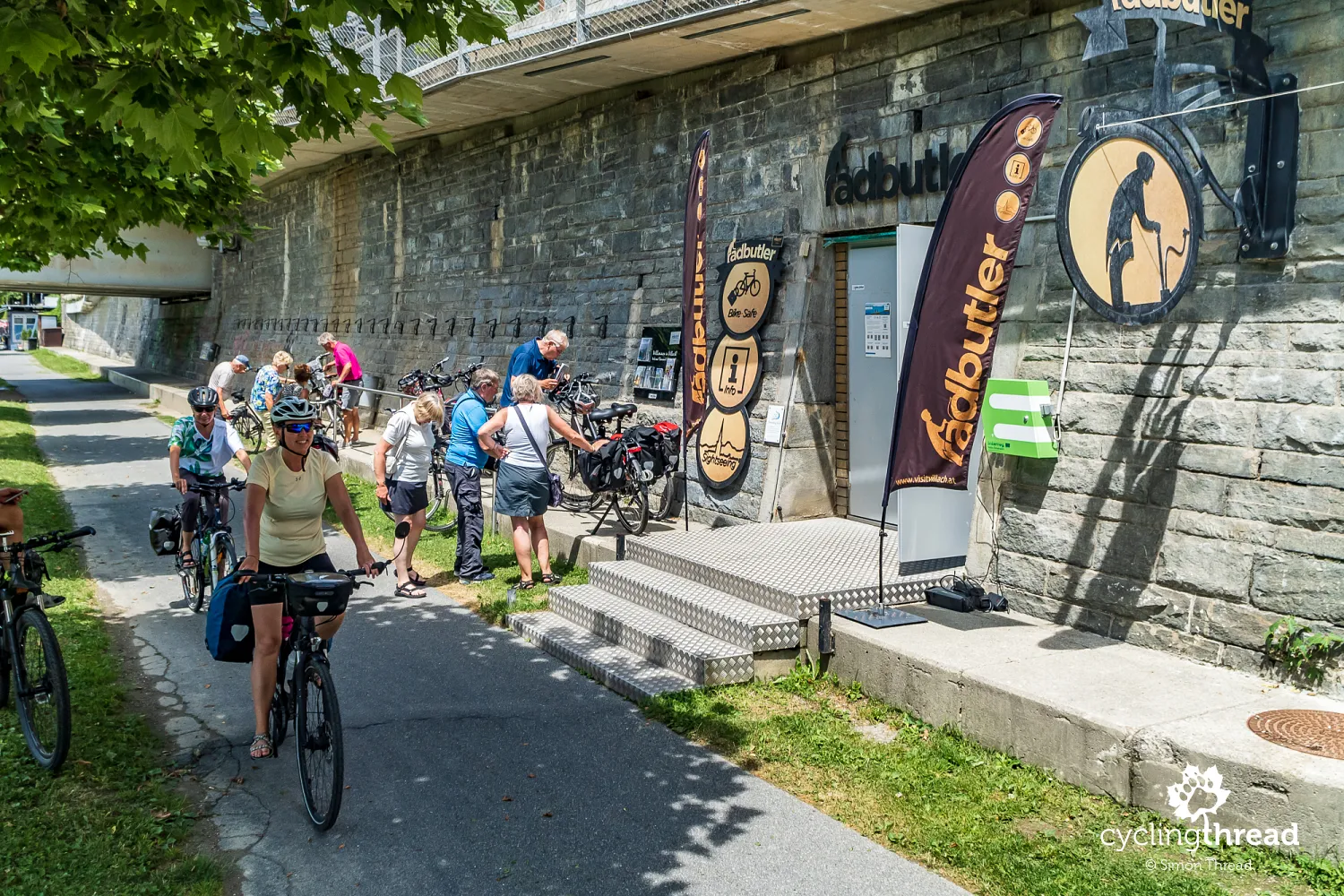
Carinthian model and the automobile museum in Villach
In Villach, we visited places we hadn’t managed to see last year. One was the massive model of Carinthia, accompanied by a short multimedia presentation available only in German. If you enjoy tracing your cycling routes on maps or observing the peaks and mountain ranges you’ve passed, this is a must-see. Another was the automobile museum located on the outskirts of Villach, near the cycling route. Both attractions are free with the Kärnten Card, a discount card for tourists visiting Carinthia. The Kärnten Card’s list of included destinations serves as an excellent guide to exploring both Villach and the entire region. Last year, we used it to visit Landskron Castle and the Pyramidenkogel observation tower.
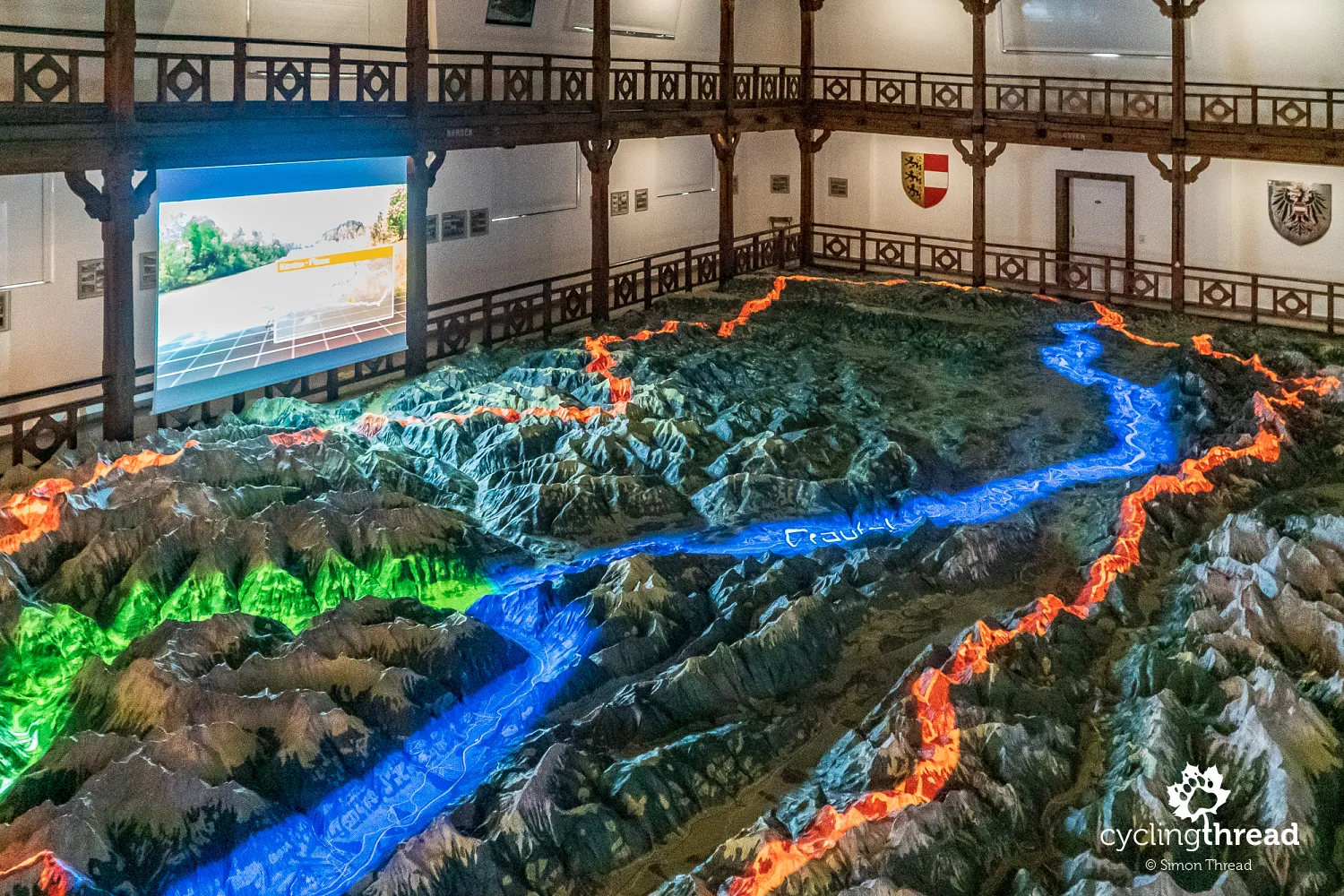
Villach was the largest city on our journey along the Drava, and we were curious about how pandemic-related conditions might differ here. It turned out that life in the city was proceeding much like the previous year, though with adherence to prevailing covid restrictions. Entry to public places required masks and hand disinfection. Perhaps the most noticeable change was a container set up on the city’s main pedestrian street for rapid covid testing. It also seemed there were fewer tourists in the city compared to the previous year, suggesting the pandemic had left its mark on visitor numbers.
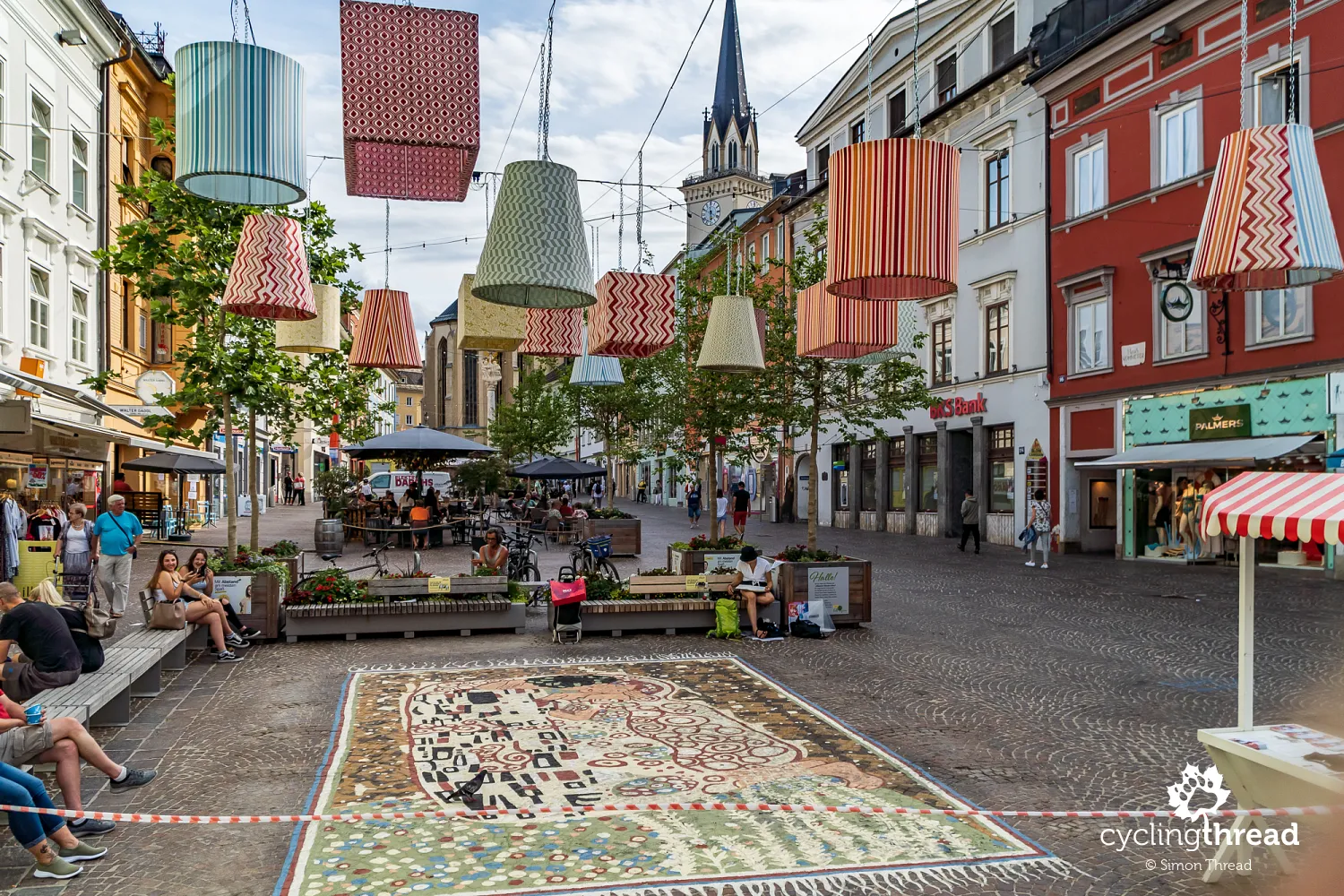
Eleven hydroelectric power plants along the Drava
The journey along the Drava Cycle Route takes on a different character after Villach. While the hydroelectric dams before Villach did not detract from the river’s lively nature, the Drava beyond Villach becomes a series of elongated water reservoirs with still water. The boundaries of these reservoirs are marked by successive dams, each housing a hydroelectric power plant. There are eleven such plants on the Austrian section of the Drava and nine in Slovenia, making the Drava one of Europe’s most heavily exploited rivers in terms of hydroelectricity. Interestingly, the energy generated by the Drava's power plants accounts for 3% of Austria’s total electricity needs - is that a lot or a little?
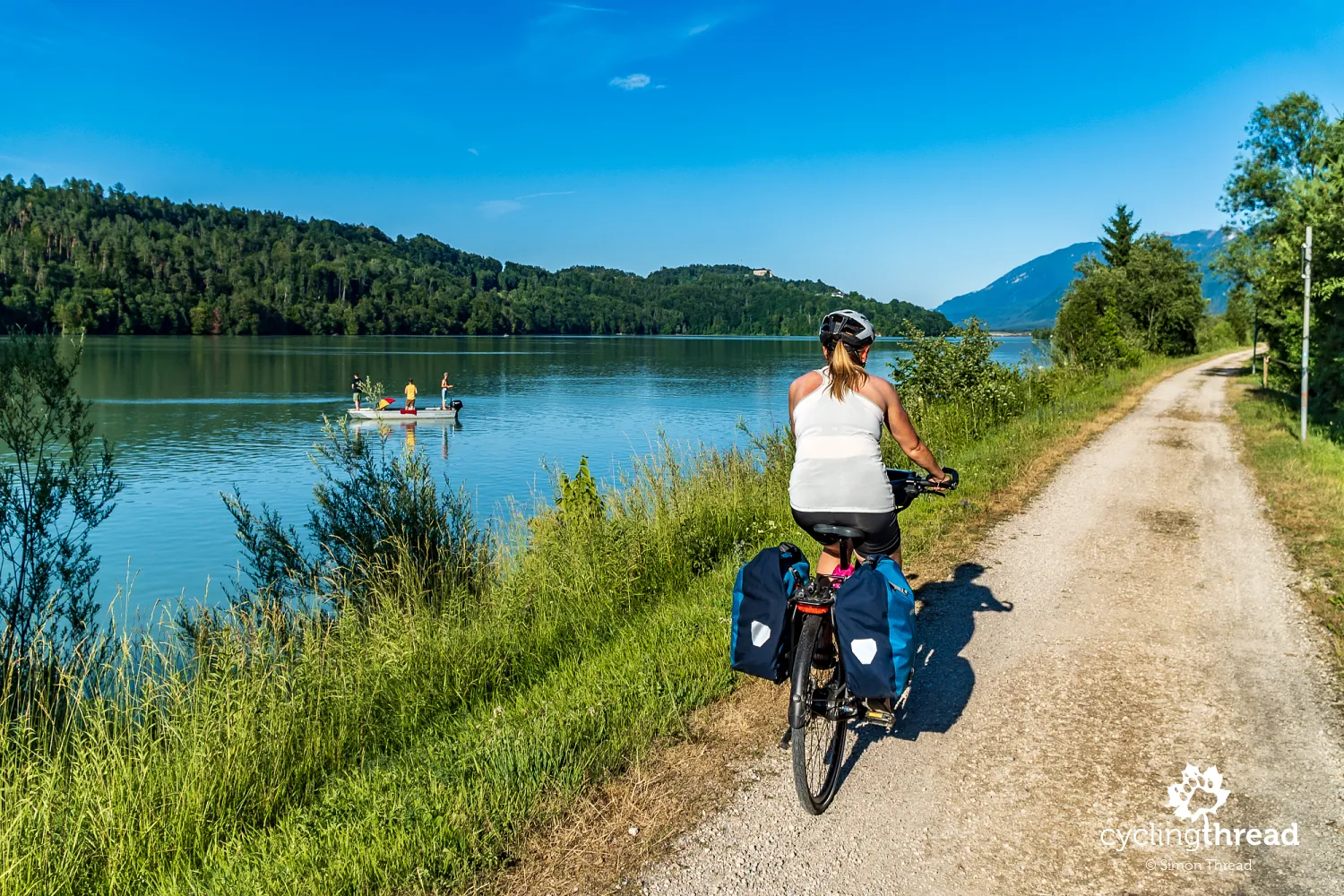
Europe’s largest fish pass
Such a significant number of hydrotechnical structures on the Drava raises concerns about the well-being of fish and other aquatic organisms inhabiting the river. The Austrians have addressed this by constructing fish passes on nine of the eleven dams. One such pass caught our attention at the Annabrücke dam and power plant - it’s not only the largest on the Drava but also the largest in Europe. The fish pass at Annabrücke stretches 750 meters and comprises 172 pools with 21 resting and spawning zones. The elevation difference between its start and end is a remarkable 26 meters, making it Europe’s tallest fish pass. It operates like a winding serpentine ascending the steep slope, allowing fish to bypass the enormous dam and power plant.
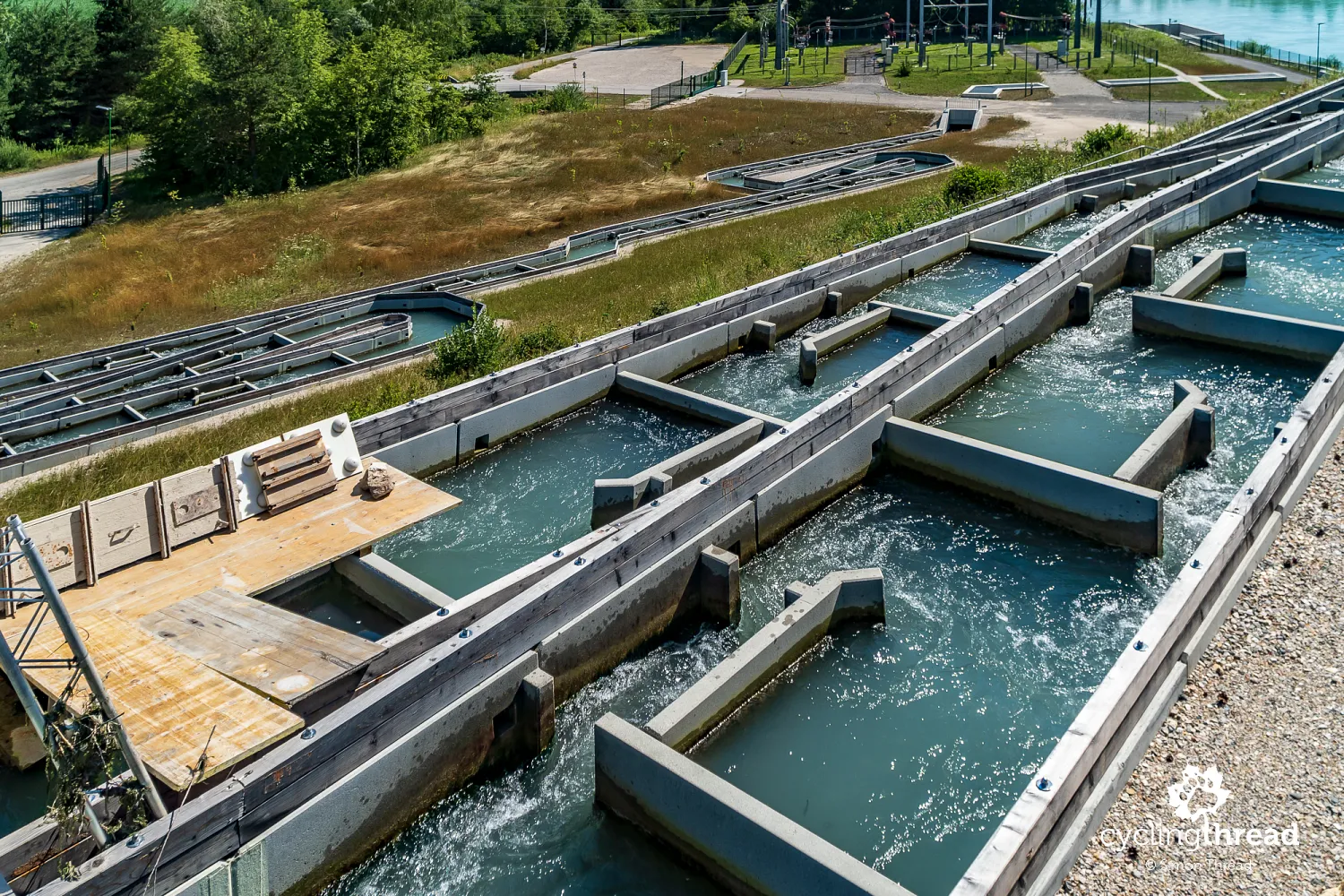
Feeding northern bald ibises in a field
Just beyond Villach, on one of the fields along our route, we spotted a few medium-sized birds in the distance. I took a few photos of their silhouettes, which seemed familiar, and… forgot about them. Once home, I revisited the pictures and quickly realized they were likely northern bald ibises! This critically endangered bird species was part of the LIFE+ reintroduction project funded by the European Union, which ended in 2019 and was carried out in Austria, Germany, and Italy. At the time, there were only 140 individuals in all of Europe. The five birds we saw feeding in the field must have been part of that program. Amazing!
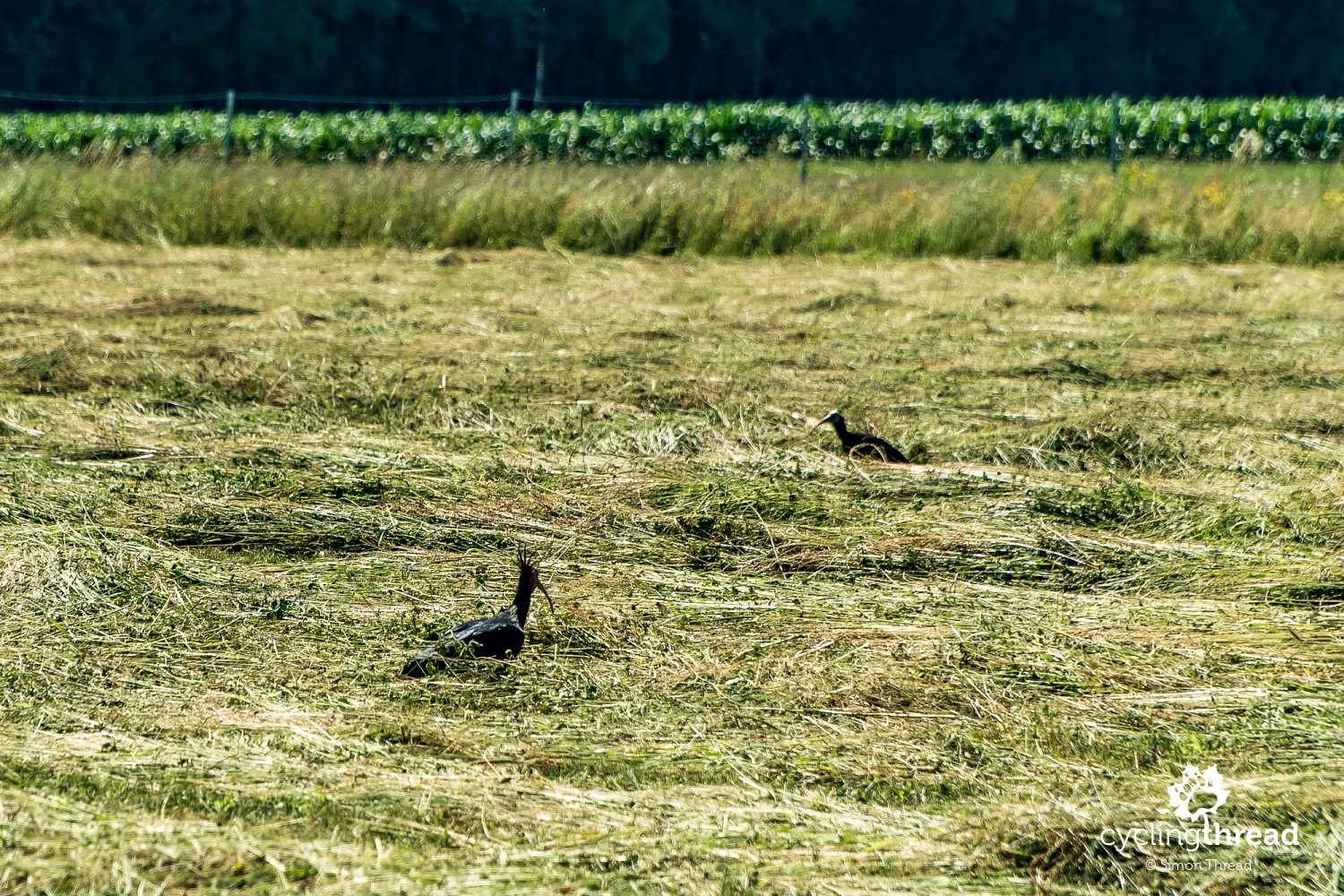
New perspectives in an art installation
Near the dam in Feistritz im Rosental, on the banks of the Drava next to the cycling route, stands an installation created last year by Viennese artist Armin Guerino. It consists of ten tall panels with mirrors on both sides. Part of the Horizontal20 Festival of New Perspectives and its “School of Perception,” the mirrors in this natural setting aim to create doubt in the observer about the reality of the seen image. At the same time, for those inside the installation, it offers a view of themselves from rarely seen perspectives. Both effects are meant to provoke reflection on how we perceive the world and whether we can distinguish truth from illusion. Can you spot in the photo below what is real and what is just a reflection? :-)
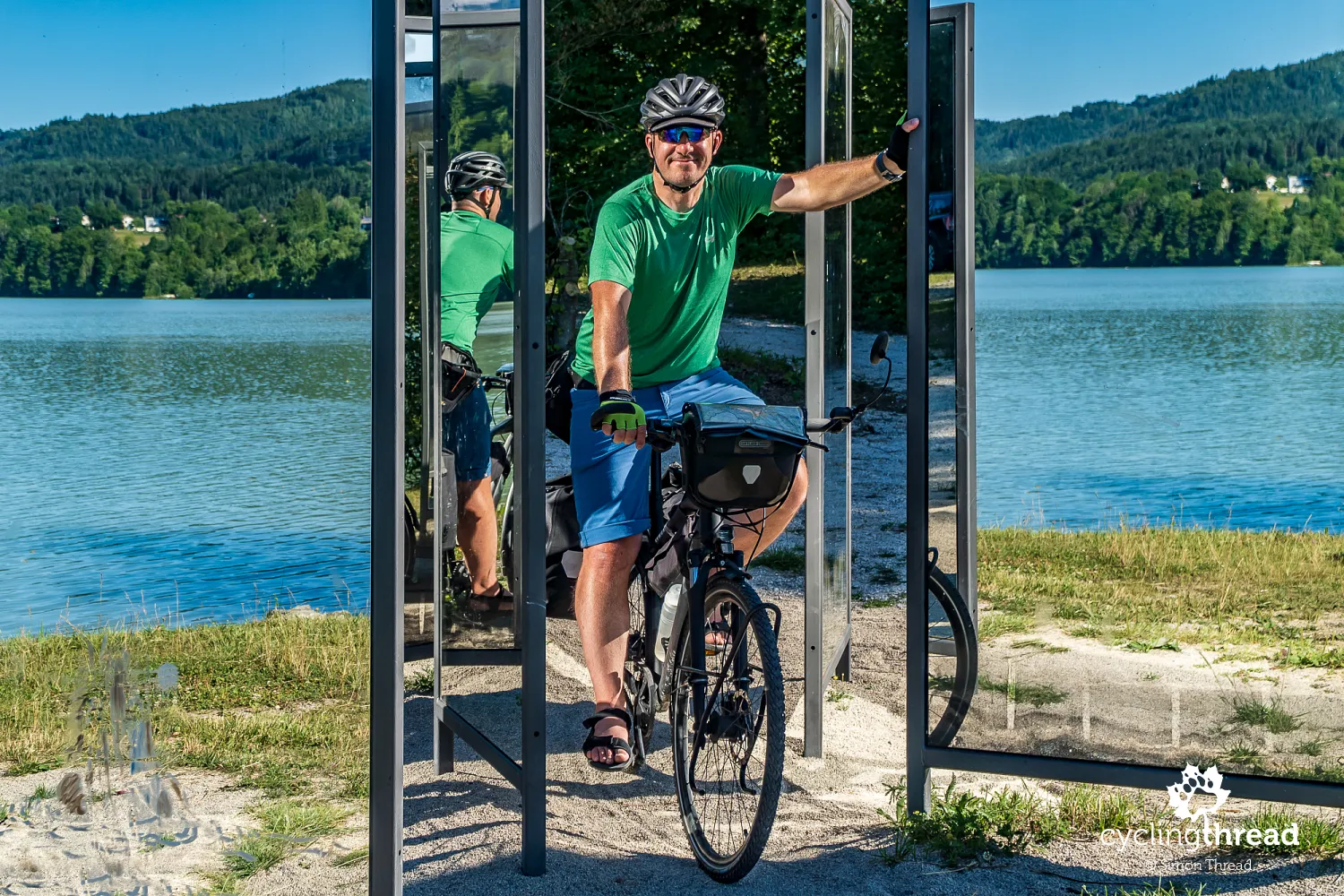
Dozens of the most scenic kilometers in Carinthia
As the turquoise Drava becomes more subdued due to numerous dams, the surrounding landscape steps in to captivate cycling tourists. The several dozen kilometers between Ferlach and Völkermarkt are probably the most picturesque section of the entire route, frequently featured in promotional materials for Carinthia. Drauradweg signs guide us along a natural path beside the regulated riverbed, with steep valley walls closing in. The route’s surroundings take on a Mediterranean feel, with just one or two villages, a power plant, a few tiny hamlets, and a resort with a pleasant riverside restaurant. We cross the Drava three times, and the crunch of fine gravel under our tires adds a touch of natural charm to the ride.
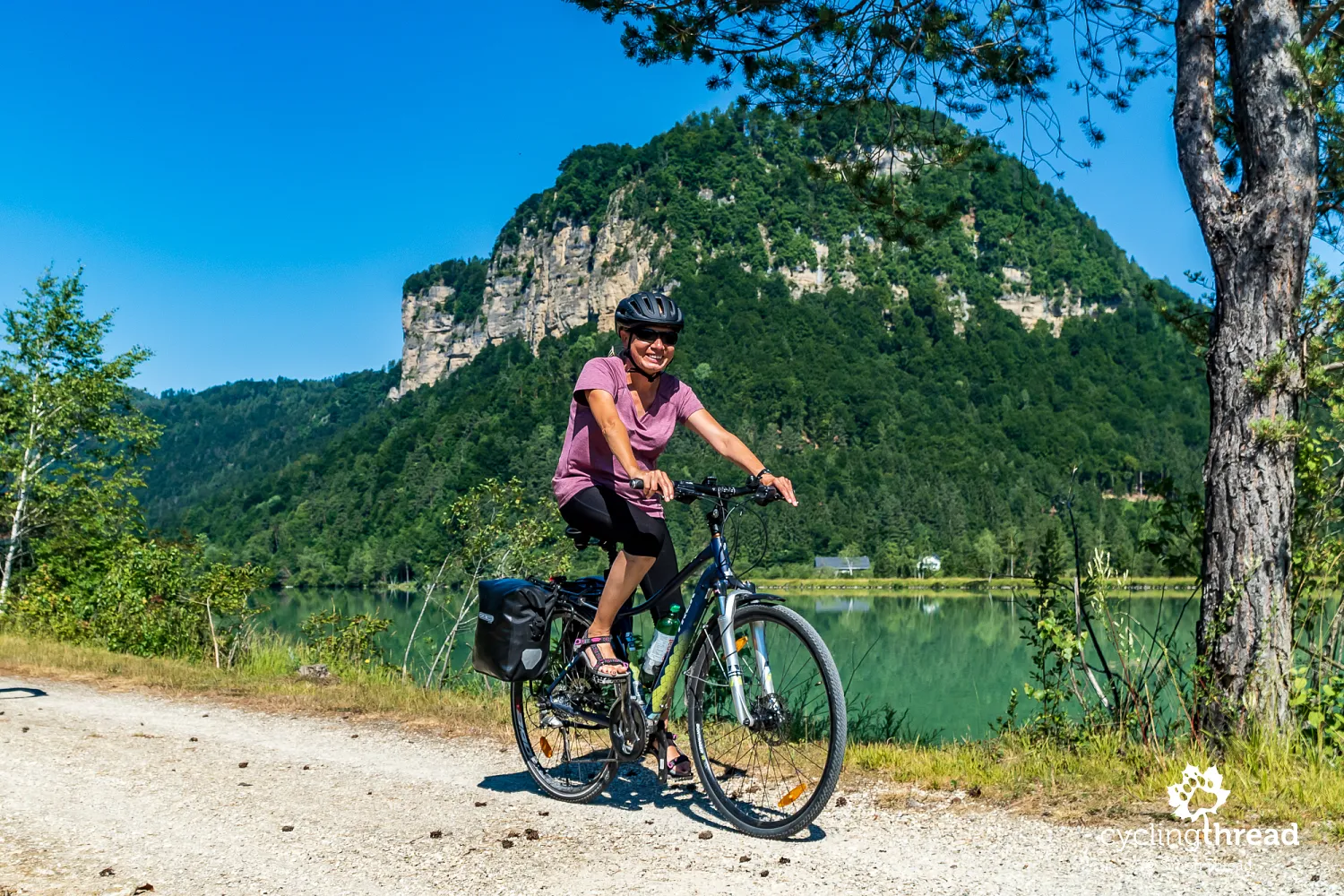
If you’re seeking an escape from cities and crowds, this is the place - although much of this section runs atop flood protection dikes constructed as part of river regulation efforts. It’s not entirely a natural landscape. This segment is also the second most popular area on the Drauradweg, as evidenced by several groups of cyclists we met traveling in the opposite direction. Perhaps they were following the Carinthian Lake Loop, which descends to the Drava from Klopeiner See in this region?
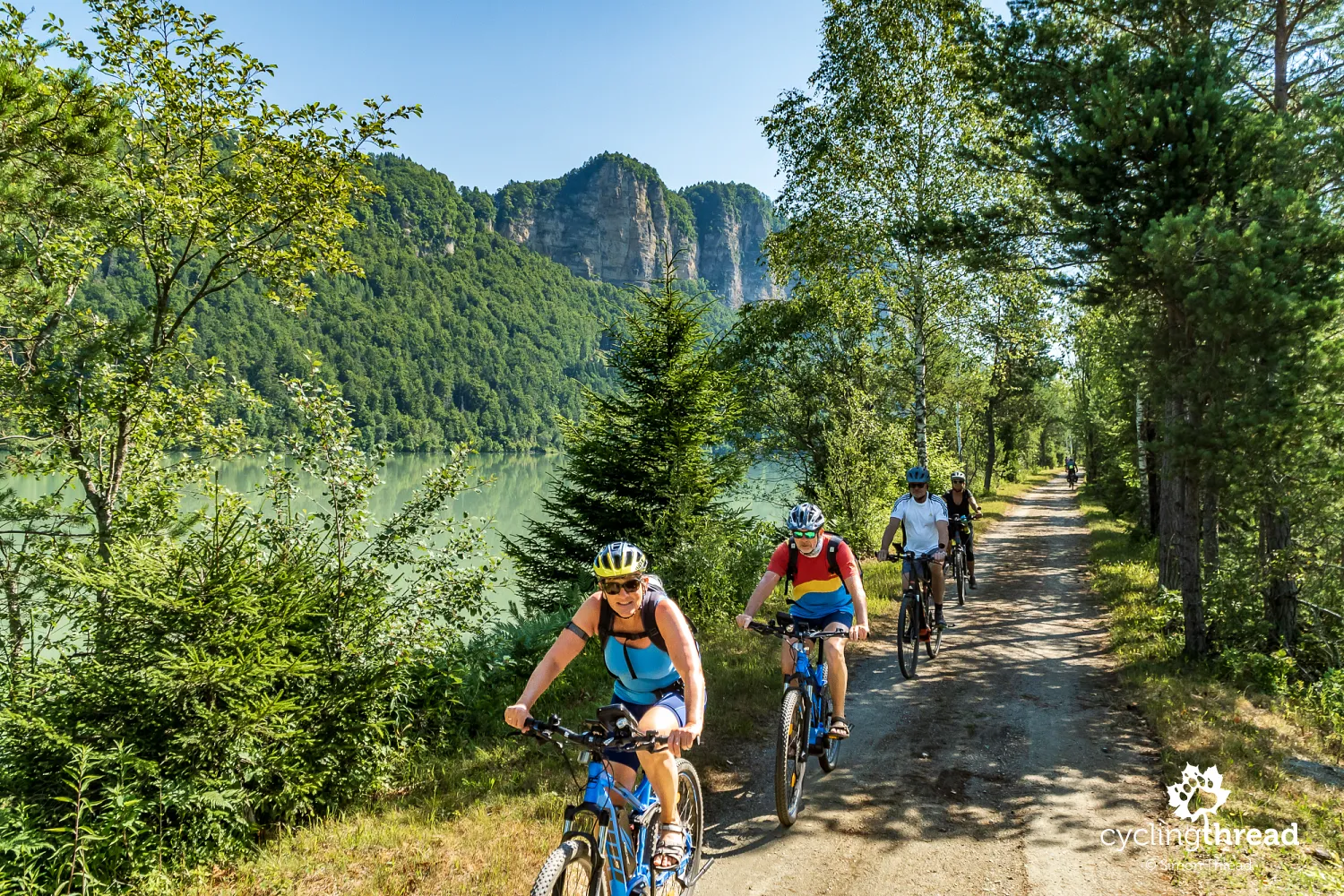
Routine bike check along the Drava
Around this area, I stopped for a quick inspection of our bikes. Despite having grown quite attached to our Raymons from the Bike Center, I didn’t want to overlook even a loose screw. Before the trip, I swapped the original, more road-oriented Continental Ride City tires for Schwalbe Marathon Plus Tour tires - perhaps the most popular choice for touring bikes. While they aren’t the lightest, they excel at their job during long rides. Their solid puncture protection, reinforced sidewalls, and practical tread mean you don’t have to treat them delicately. Inflated to the recommended maximum of 6 bars, they also handle rolling resistance on asphalt quite well.
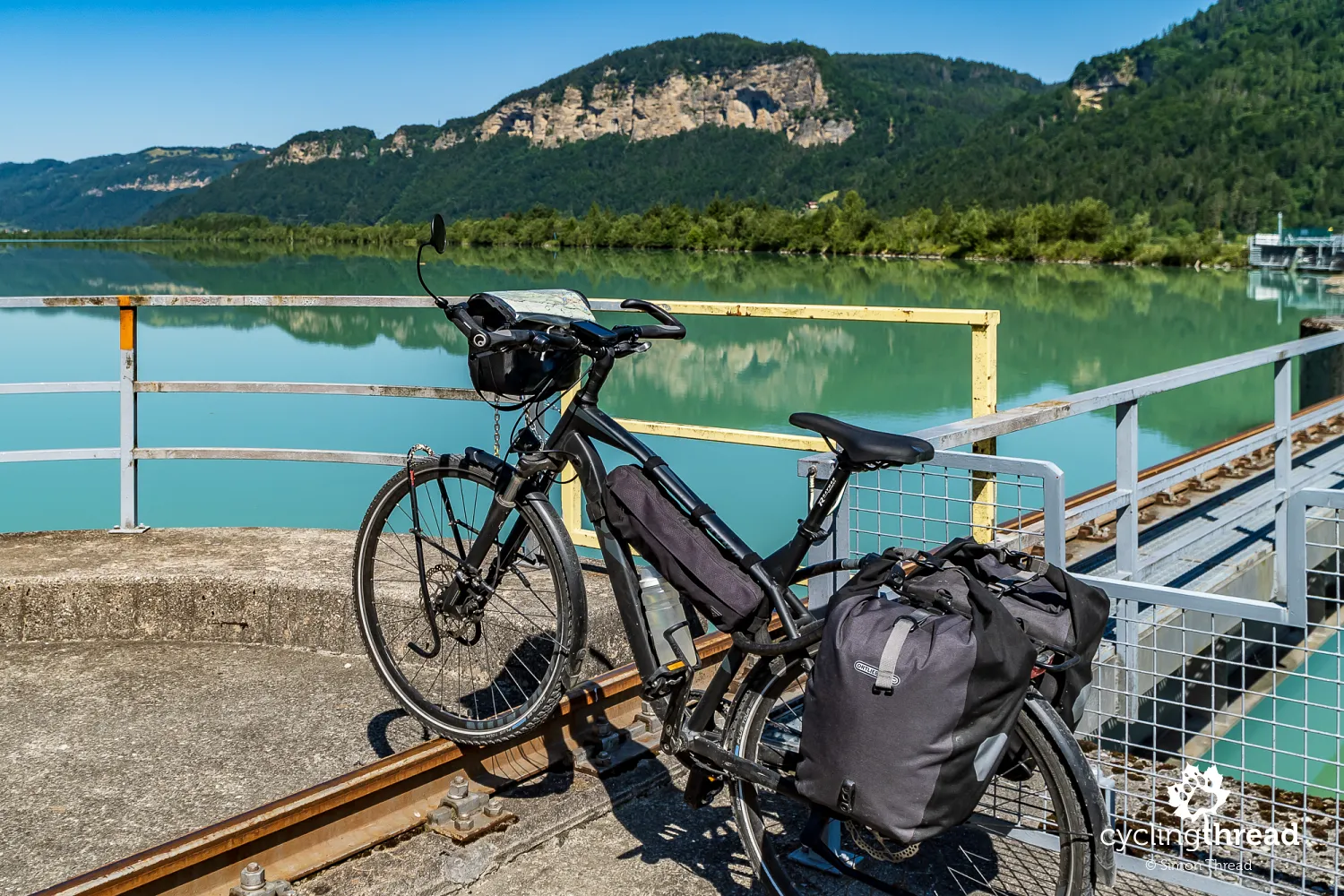
Signs pointing to beds and markets
Somewhere near Völkermarkt, an information board along the cycling route caught my attention. It’s a great example of the friendly and practical approach Austrian municipalities have toward cyclists traveling the Drava Cycle Route. The board not only directs riders to local bike-friendly guesthouses but also provides times for Wednesday and Friday markets in the town. Interestingly, there’s no uniform design for informational boards in Austria, but most follow a green-and-white color scheme and an elongated rectangular shape. We also noticed that Austria lacks large-format advertisements and banners in public spaces, which undoubtedly enhances the charm of Austrian towns.
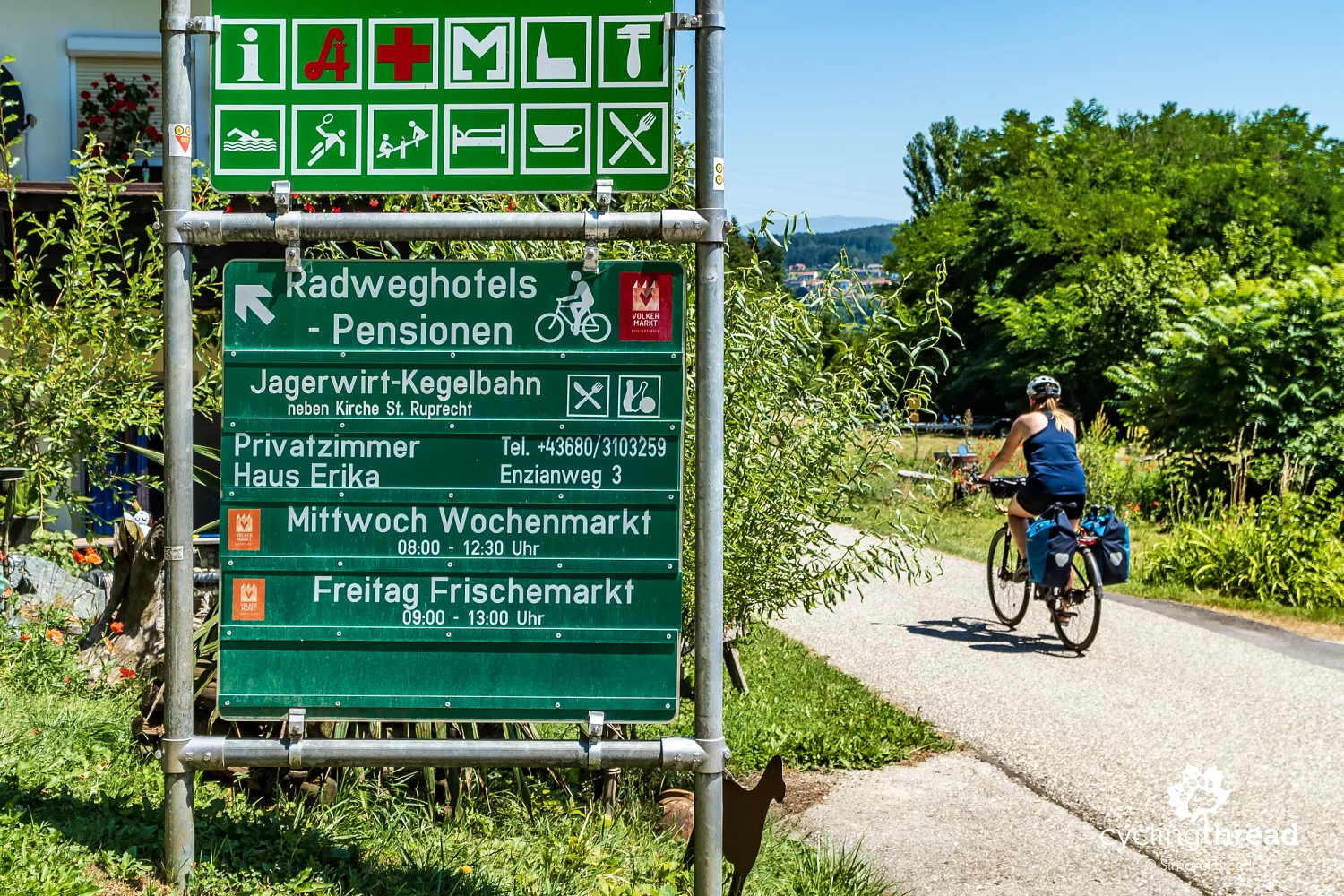
Interval-filled section to end the journey
We finally leave the river behind after Völkermarkt, climbing higher into villages scattered along the rugged valley slopes. Sometimes we ride on dedicated cycling paths; other times, we descend onto quiet public roads between villages. Unexpected roadworks, poorly marked, surprised us, but we ignored them along with other cyclists we met. These were our final kilometers on the Drauradweg. After a dozen or so interval-filled kilometers through quaint Carinthian villages, we reached the small Aich/Dob train station, where return trains to Villach depart hourly. We settled into a small shelter and… feeling a tinge of regret that our adventure had ended, waited for our train.
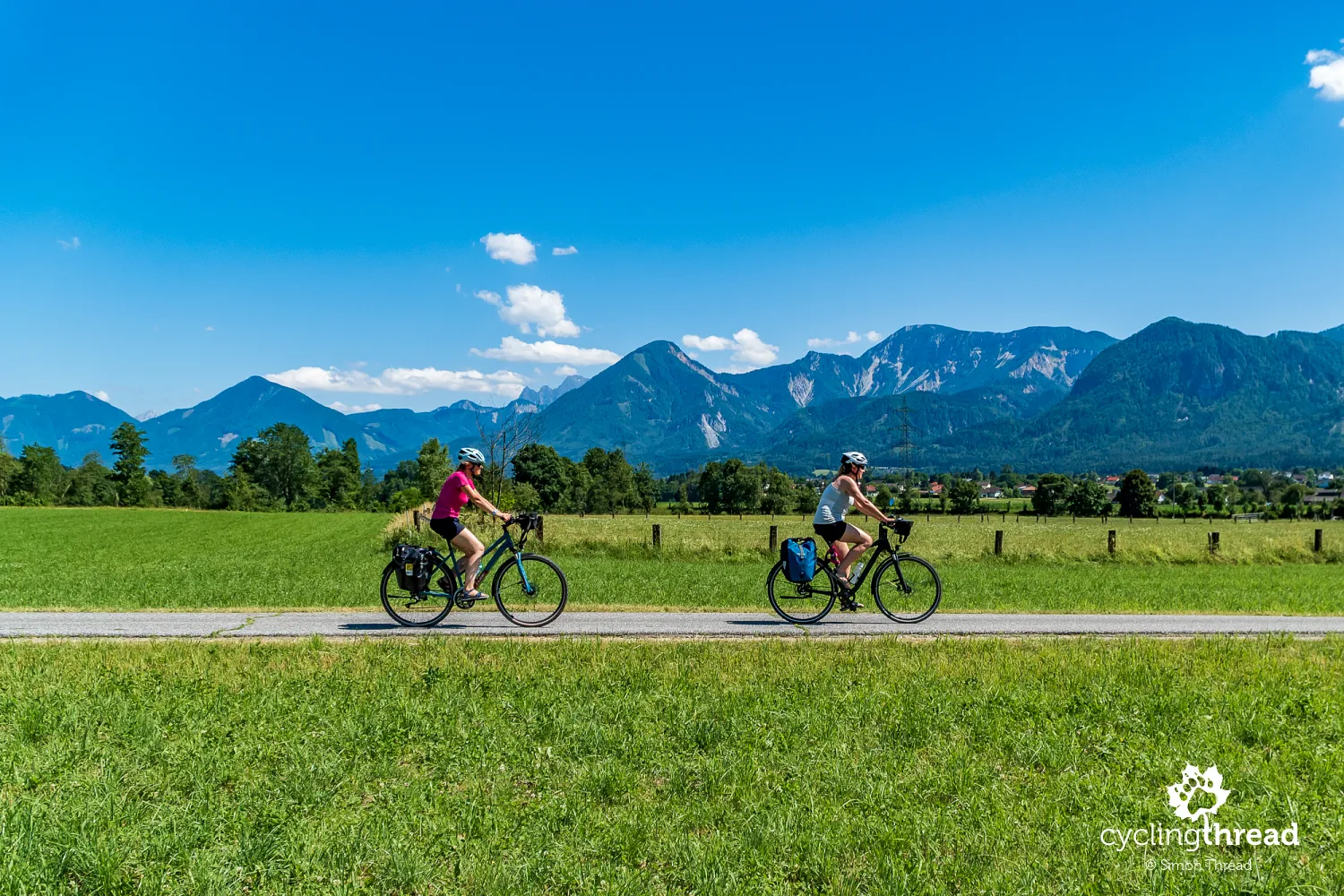
Cycling road 100 meters above the water
Shortly before saying goodbye to the Drava, we experienced an exhilarating ride on a rather unusual cycling road. This path runs on a mesh platform suspended beneath the Jauntalbrücke railway bridge, constructed between 1959 and 1962. At the time, it was one of the longest and tallest railway bridges in Europe. The Jauntalbrücke stretches 430 meters, with the railway tracks running 95 meters above the water, clearly visible through the platform beneath the cyclists' wheels. This is not a place for those afraid of heights, but the view from the bridge is stunning, offering a perfect farewell to the Drava Cycle Route.
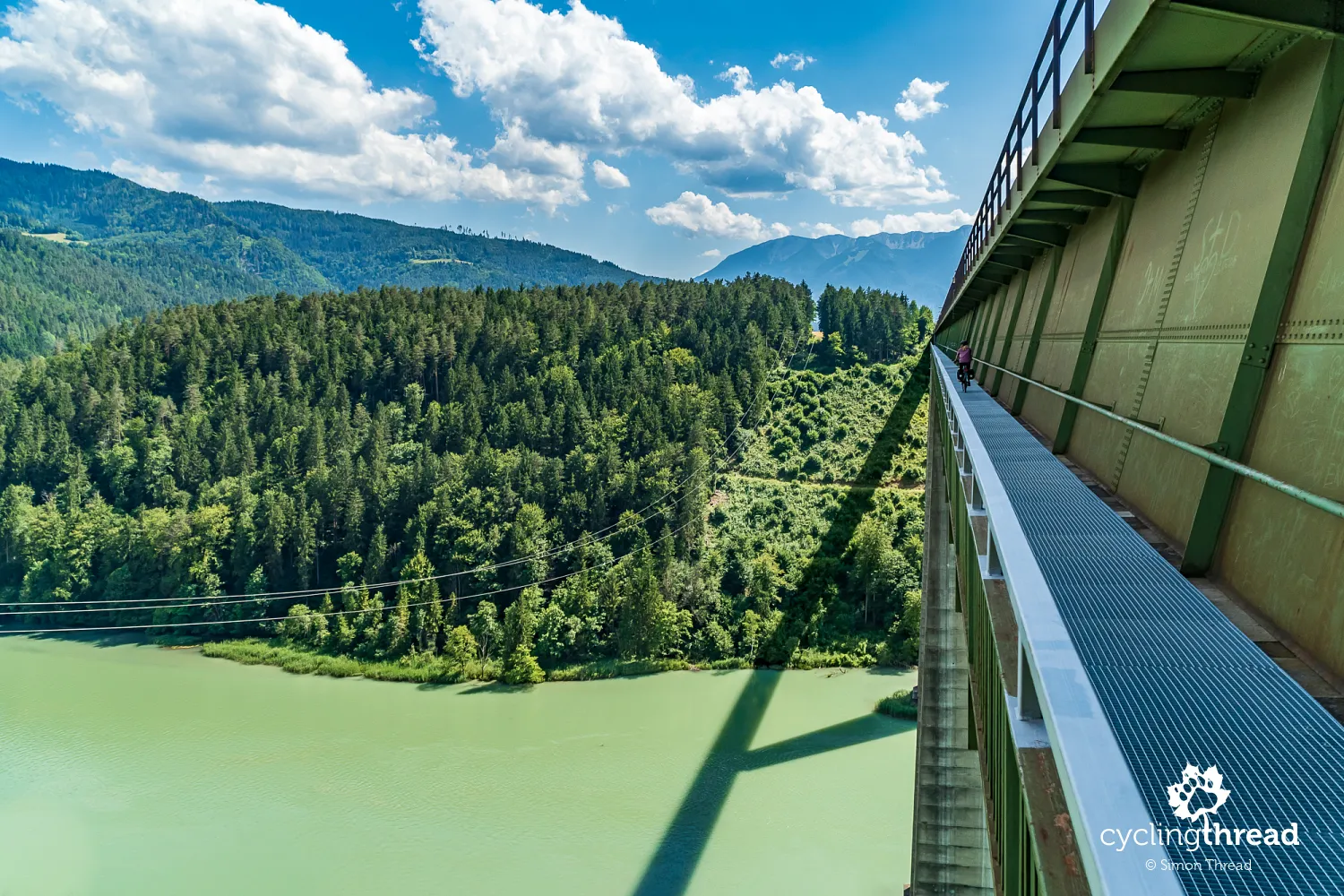
The pandemic doesn’t stop cycling adventures
The coronavirus pandemic didn’t hinder our plans for a multi-day cycling trip to Carinthia. Thanks to quick double vaccinations, we traveled to Austria with a sense of safety and without significant health concerns. However, the pandemic influenced our choice of transport - we drove to Carinthia this time, forgoing trains, which we usually prefer for traveling across Europe. As expected, cycling through Europe this summer was generally safe, though still subject to mask requirements in public places and frequent hand sanitization. Combined with vaccinations, this seemed like a very small price to pay for the opportunity to enjoy a cycling holiday.
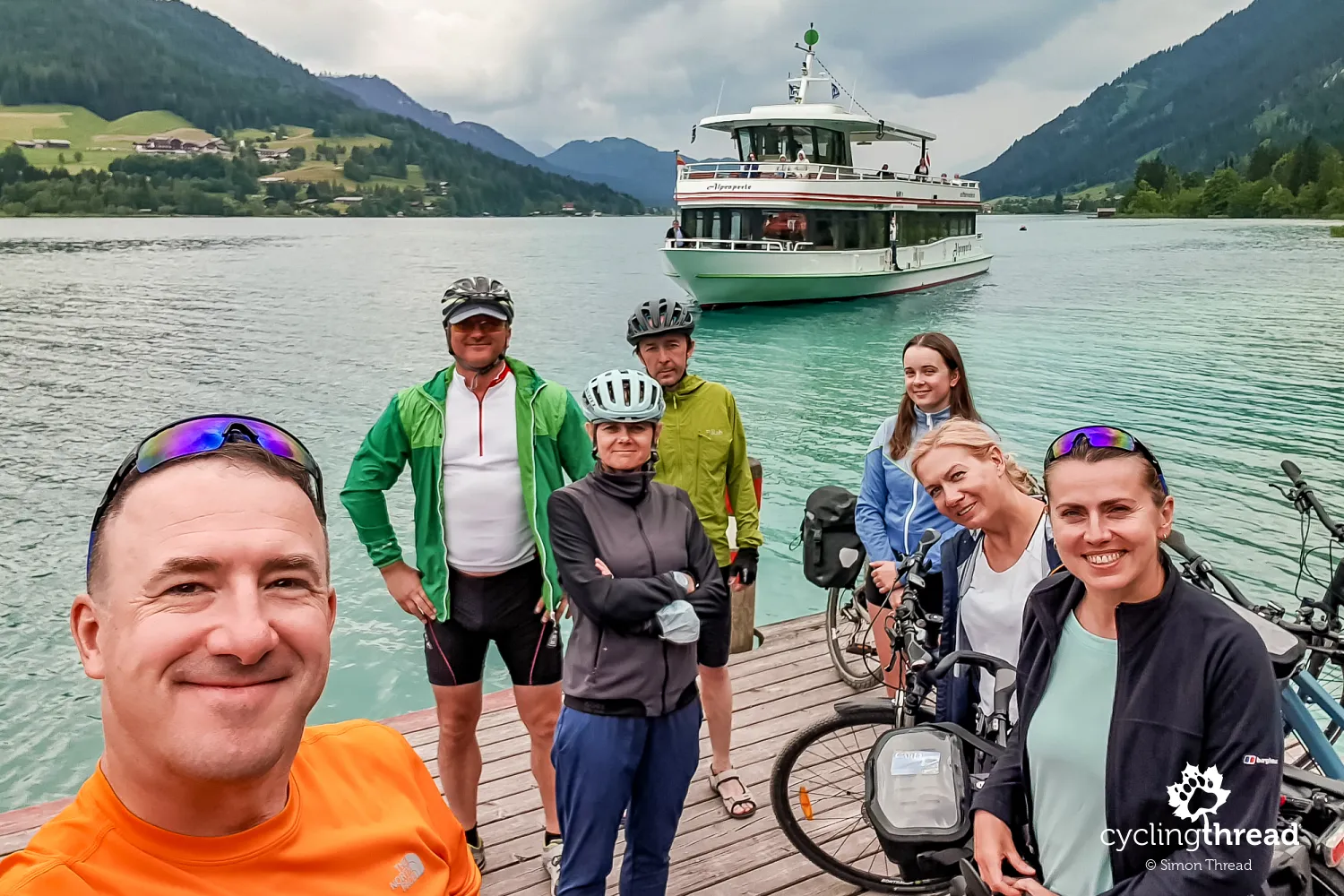
Five stars from ADFC for the Drava route
When assessing cycling routes in Europe, the Allgemeiner Deutscher Fahrrad-Club (ADFC) evaluates the overall project and tourist product. For a route to receive a high ADFC rating, it must, among other things, be widely accessible to various types of bicycles and feature safe, well-maintained surfaces - not necessarily asphalt. Key factors include keeping the route away from car traffic, accessibility to public transportation (especially railways), clear signage, informational materials, and infrastructure like accommodations, restaurants, shops, bike services, and rental facilities. The Drava route’s top rating ensures you won’t face issues with these essentials while cycling along the river.
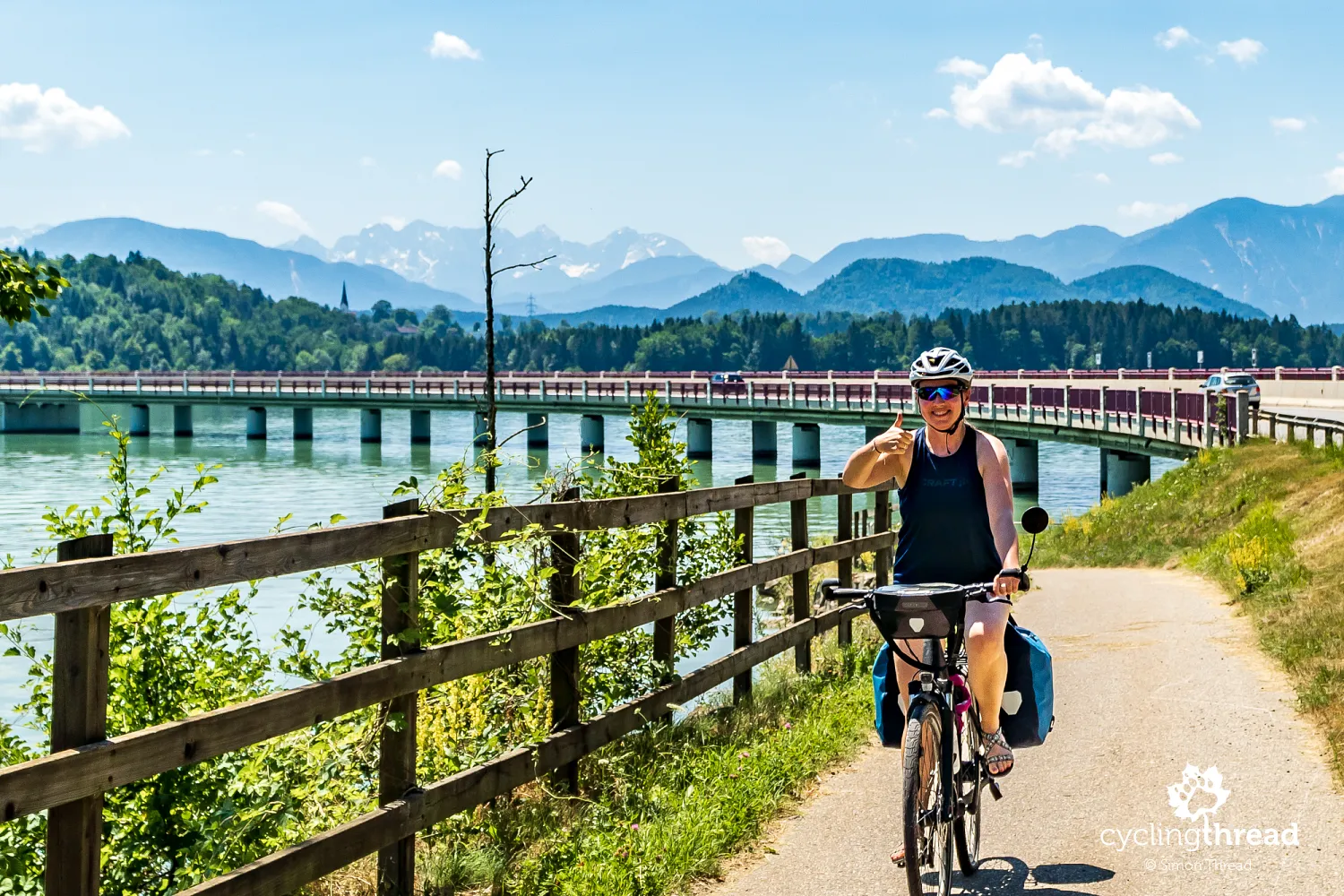
The Drava Route Hosts Association
One notable point is the organization uniting local businesses catering specifically to cyclists traveling the Drava route. This is the Verein Drauradweg Wirte, or the Drava Route Hosts Association, headquartered in nearby Klagenfurt. The association includes owners of accommodations, restaurateurs, bike rental services, and tour organizers. In such places, you can count on hosts understanding cyclists’ needs, such as one-night stays and secure overnight bike storage. The association’s website is a great starting point for planning a cycling trip to Carinthia.

Where to book accommodations and find information
You’ll find plenty of information, including accommodations, recommended daily stages, and route highlights, on the official Drava cycling route website. Carinthia also provides a dedicated cycling portal, featuring details about other routes in the region, such as the stunning Alpine Alpe-Adria route. We booked our accommodations in Carinthia via Booking.com, prioritizing properties associated with the Drava Route Hosts Association. While Booking.com’s market dominance is often criticized, we appreciated the level of reliability it offered. It’s also worth checking the list of attractions available with the Kärnten Card, a discount card for visitors to the region.
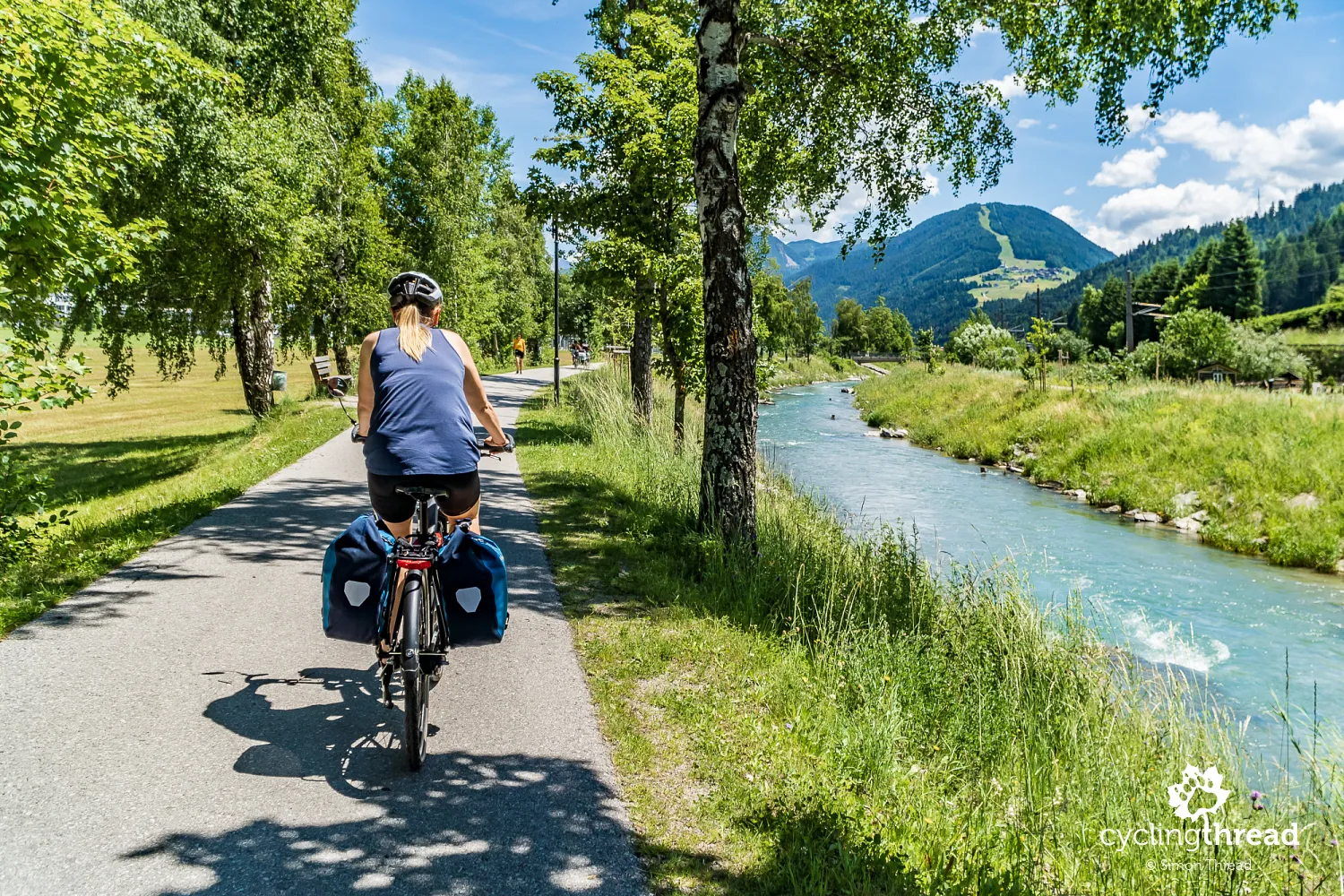
Bird Service offers a route in Carinthia
If you’d prefer not to worry about organizing the trip yourself and want a ready-made experience - without even having to bring a bike - Bird Service has you covered. Our partner offers an eight-day cycling trip in Carinthia, covering a significant stretch of the Drava route from Spittal an der Drau through Villach to the Ferlach area. You’ll also explore other parts of the region, including Carinthia’s vibrant capital, Klagenfurt. On request, Bird Service can arrange a trip focused solely on the Drava Cycle Route, similar to ours.
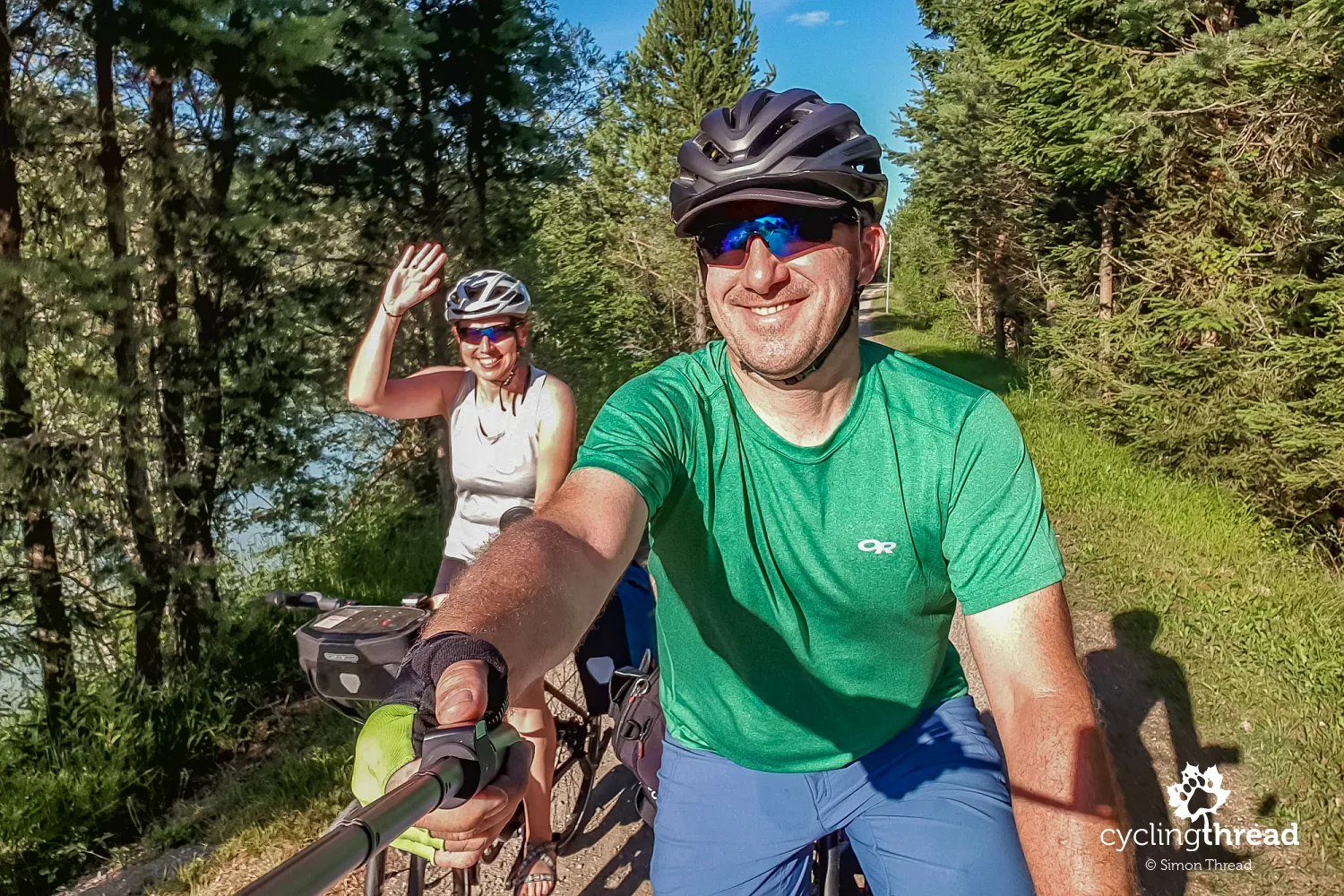
Plan your cycling trips in advance
I’ve always encouraged planning summer cycling trips in Europe during the winter. Popular regions and cycling routes across Europe see high demand, so if you want decent, reasonably priced accommodations near the routes, start looking several months in advance - during winter! Early planning is also recommended for securing cheaper train tickets to Austria, as availability is limited. By late spring, our Carinthian trip this year was already finalized. Good luck!
Back to topHave a safe ride! 💚
Simon Thread
(Szymon Nitka)
I'm a passionate cycling traveler and the voice behind Cycling Thread. I explore Europe on two wheels, documenting the most scenic routes, inspiring places, and cyclist-friendly practices. My writing blends personal experience with practical insights and a deep love of travel. I'm also a contributor to National Geographic Traveler magazine.



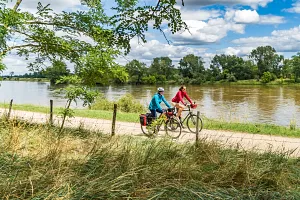
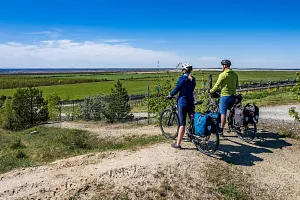
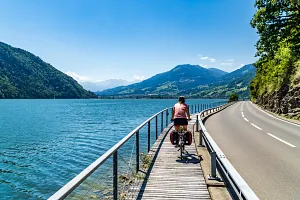
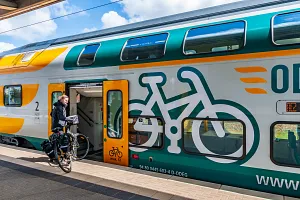
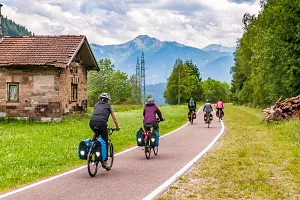
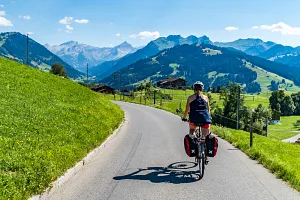
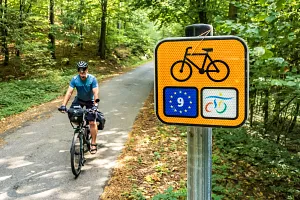
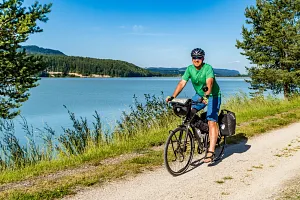
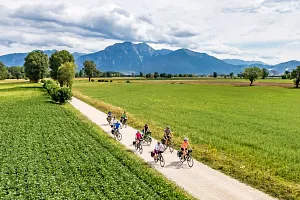
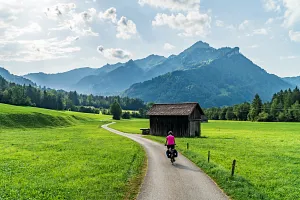
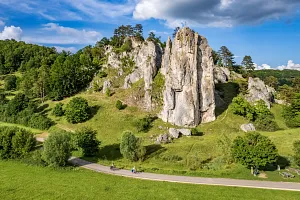
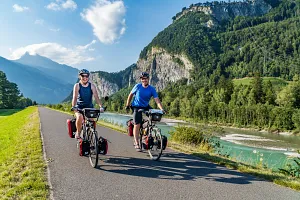
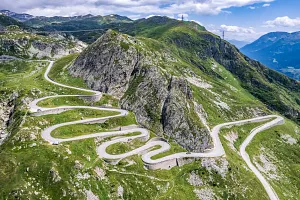
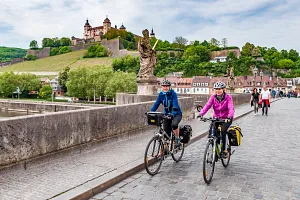
Your Comments
Add new comment